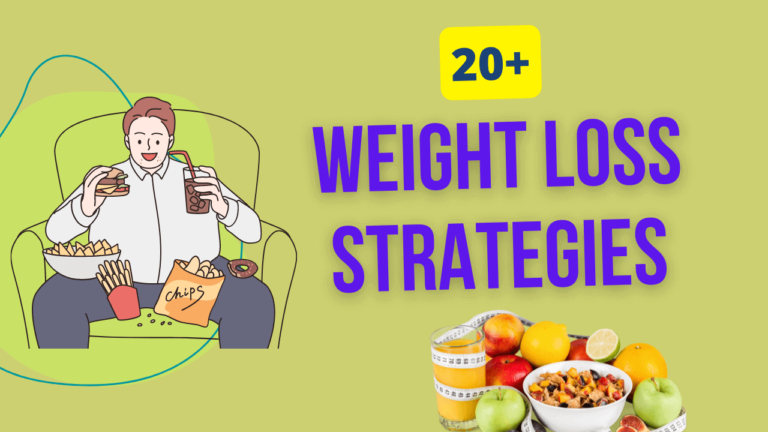68 unhealthy food list – Common Foods You Love, but Your Health Hates
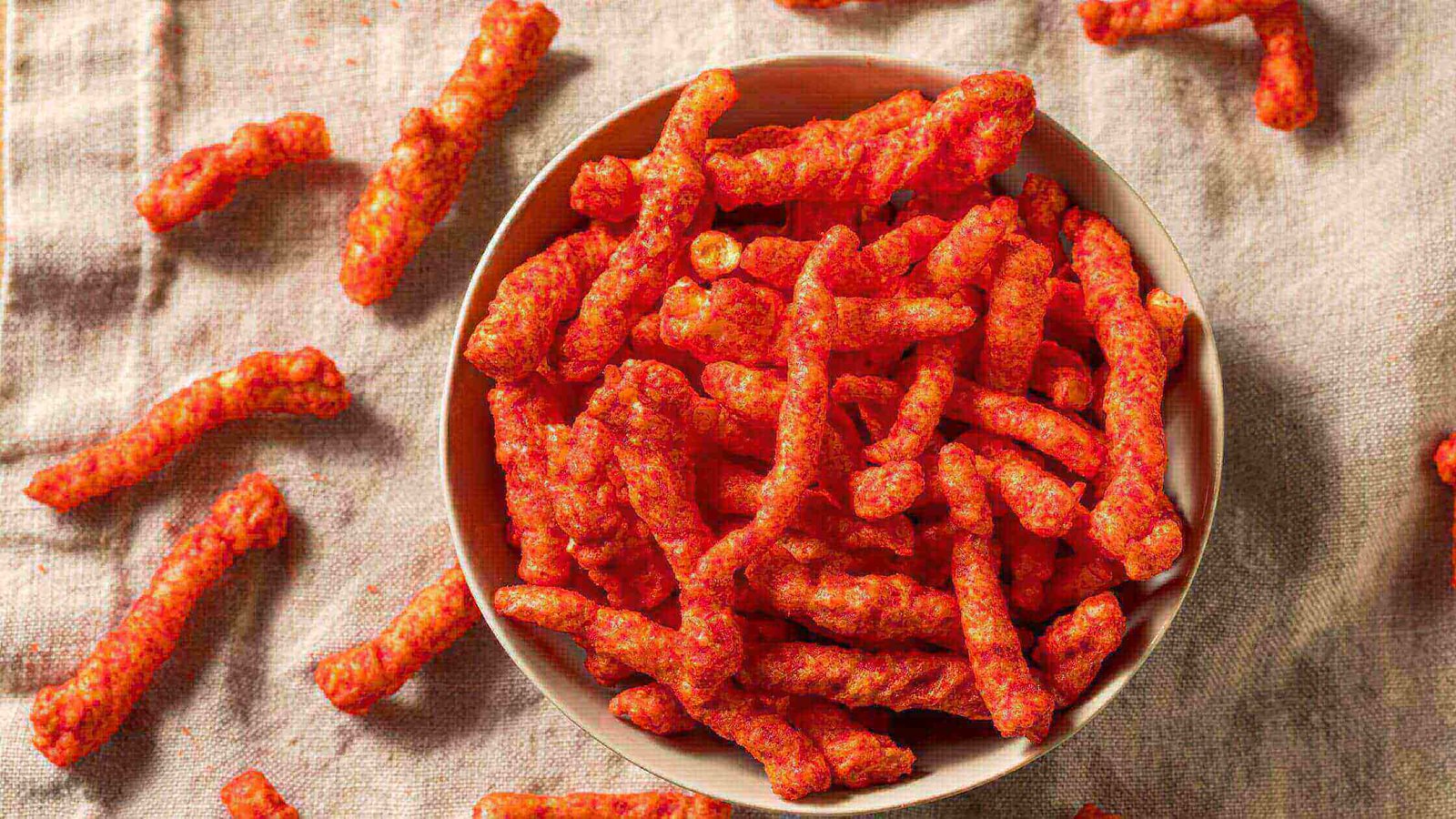
In our fast-paced lives, healthy eating can sometimes take a backseat to convenience. It’s tempting to grab processed foods off the shelf without considering their nutritional value. These unhealthy food are readily available and have saved us time, but there’s a catch.
Many familiar items, such as soft drinks and snacks like Twinkies, are part of our regular diet. However, consuming them excessively or without caution can result in serious health issues, as noted by experts, including cardiologists.
While some products are obviously unhealthy, their profitability keeps them on the market. Others might not seem harmful initially, but their negative effects can accumulate if consumed in large quantities. It’s important to strike a balance between convenience and making choices that support our long-term well-being.
1. Diet Cola
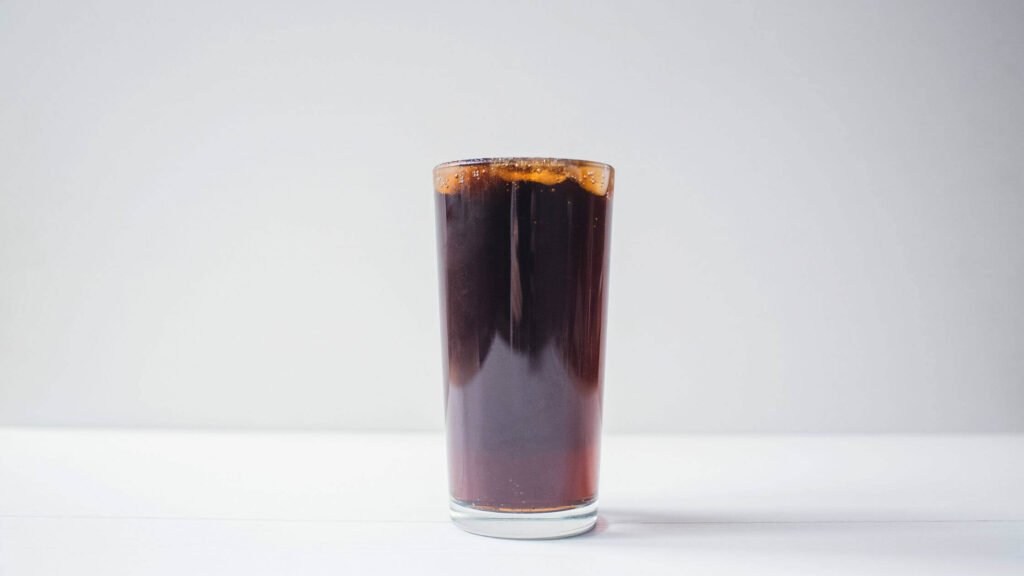
You might think diet cola is a smart swap for regular cola because it’s sugar-free and has no calories. Many people grab it when they’re trying to watch their weight. But, here’s the twist: it might not be as good as it seems.
Even though experts at places like the Mayo Clinic say it’s fine to have a little bit of diet cola now and then, drinking more than one can per day could lead to some serious problems.
According to Healthline, research shows that diet colas might not be as “diet” as we thought. The fake sugars they use can actually cause issues like kidney problems, cavities (because they’re pretty acidic), and even put you at a higher risk for things like brittle bones, feeling really down, and heart troubles. They still need to do more studies to be totally sure, but it could be a good idea to cut back on diet cola or maybe even stop drinking it altogether.
2. Margarine

Margarine is often made creamy by adding vegetable oils, like palm oil, which can have more than 13 grams of saturated fat in two cups. Research shows that there might be a link between palm oil and a higher chance of heart disease.
As an alternative to margarine, you could put olive oil on your bread instead. Pay attention to the size of your servings to avoid consuming too many calories (one tablespoon has 120 calories). Experts like Manaker say that a good finishing oil like Graza can add rich taste and healthy fats to dishes.
3.Mayonnaise
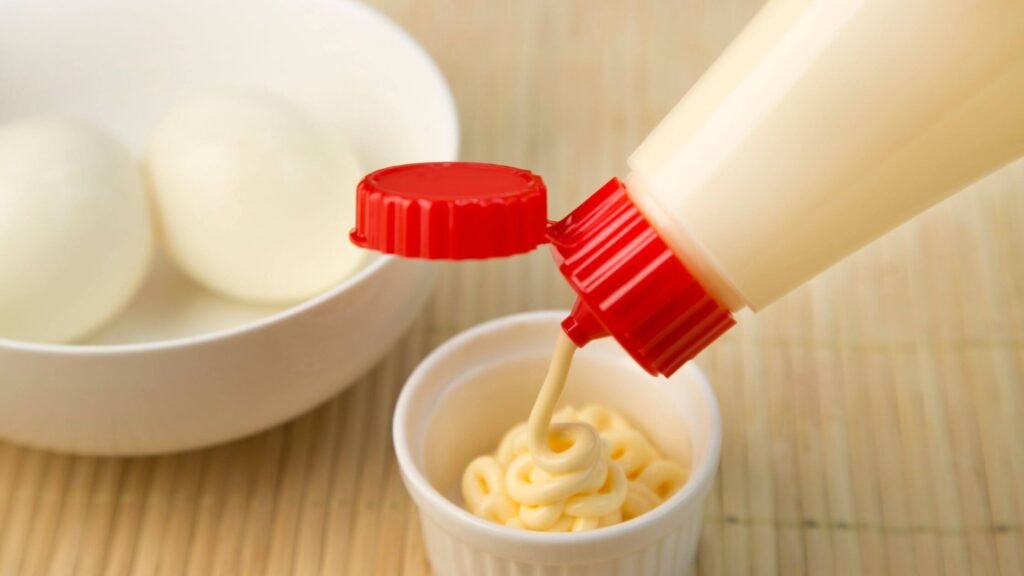
Mayo tastes great, but it has a lot of fat, especially saturated fat. There are 10 grams of fat and 1.5 grams of saturated fat in one tablespoon of Kraft Mayo, and it’s easy to eat more than one tablespoon. Even though mayo isn’t usually high in saturated fat, it’s important to watch how much you eat of it to keep your heart healthy and avoid diseases. Also, mayo has 10 grams of fat per dish, which can make you eat more calories than you need and cause you to gain weight
A healthy alternative: mix Greek yogurt, lemon juice, mustard, pepper, and spices to make your own mayonnaise. With this change, each quarter-cup amount saves more than 200 calories and 20 grams of fat.
Greek yogurt also has protein and calcium, which makes it a healthier spread. Manaker recommends Primal Kitchen Mayo, which is made with avocado oil, for people who want to stay away from seed oils and other iffy ingredients. This pick is good for mayo lovers who want a healthier option.
3. Hot Dogs

Hot dogs are categorically recognized as highly processed foods, encompassing an array of ingredients beyond their primary animal meat content. Notably, one such ingredient is maltodextrin, which, when excessively consumed, has been associated with potential harm to both the intestines and the stomach.
The fact that one hot dog provides 33% of the daily sodium intake recommendation raises concerns about their nutritional impact.
Hot dogs also commonly list “poultry meat,” a vague word that makes it hard to tell where the meat came from. All of these disquieting details highlight how commonplace hot dog sales are, even at prestigious stores, and cause one to pause and think about their shopping habits.
4. Breakfast Sandwiches
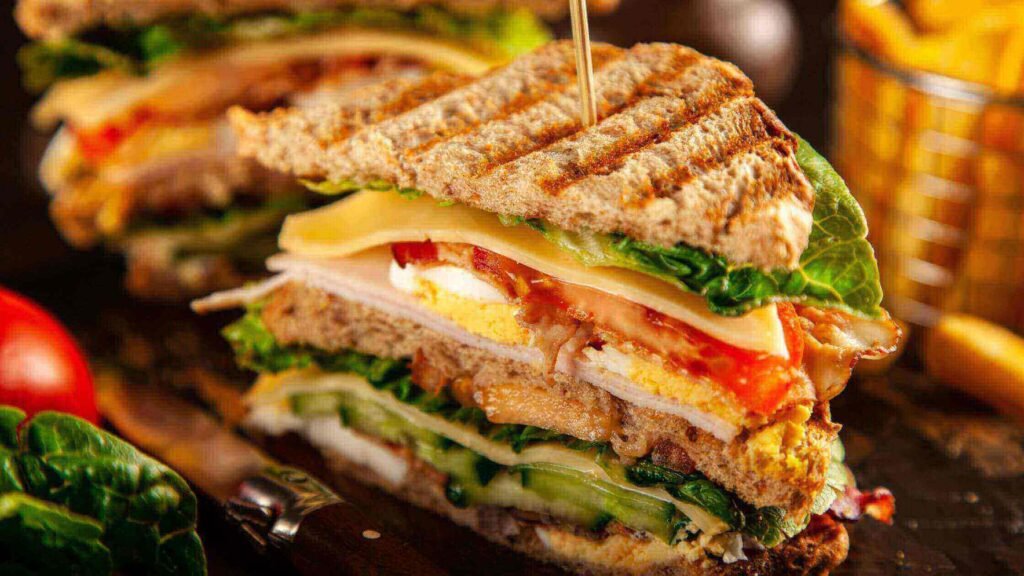
Breakfast sandwiches from well-known fast food restaurants are tempting because of their ease. The flavor combinations in these sandwiches are undeniably delicious. The attractiveness, however, masks a possible harm to health, especially with regular use.
While an occasional treat may not raise concerns, it’s crucial to note that breakfast sandwiches tend to be laden with cholesterol. The insightful analysis by The Nutrition Twins underscores that partaking in a fast-food breakfast sandwich three times a week could lead to an annual weight gain of up to eight pounds.
Each sandwich has about 300 more calories than a prepared one, which contributes to the weight gain. It’s important to consider the long-term effects of our eating choices in light of this new information, which may cause us to rethink some of our favorite foods.
5. Candy
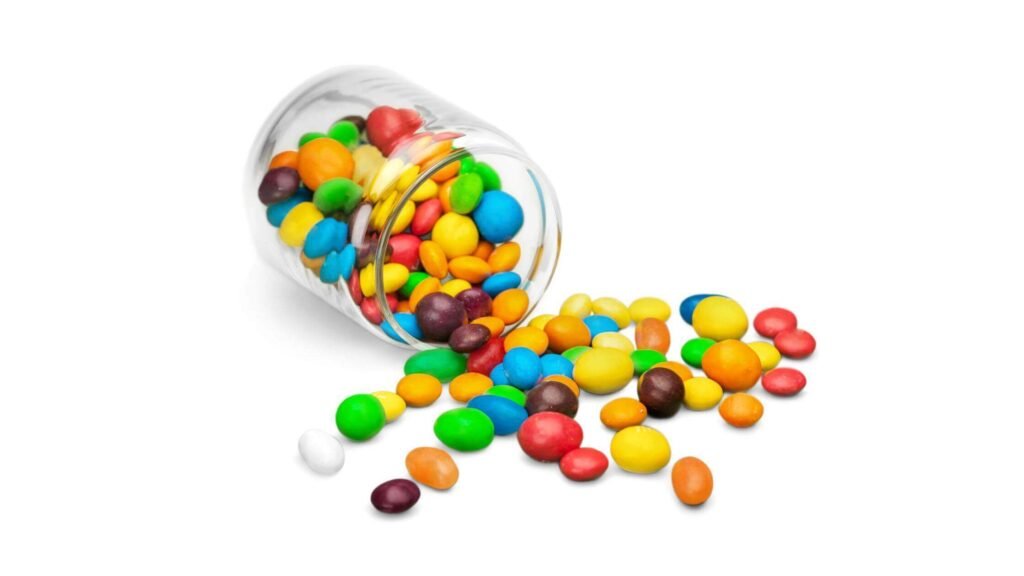
Candy’s appeal lies in its sweetness, often derived from refined sugars like high fructose corn syrup, sucrose, and dextrose. While naturally occurring sugars in fruits and vegetables are beneficial, refined sugars in candies and sugary drinks can have detrimental effects on health.
Regular consumption of sugary foods and beverages is linked to an increased risk of heart disease, inflammation, and diabetes due to elevated insulin levels. Moreover, these treats contribute empty calories to your diet, leading to weight gain and potentially even fatty liver disease. Choosing alternatives that prioritize your health can pave the way for improved overall well-being.
M&Ms’ artificial hues, Yellow No. 5 and Yellow No. 6, may distract kids. Some countries restrict these substances because they are associated with ADD. Norwegians have prohibited certain colors, and EU meals with these additives must warn of their potential effects on children’s activity and attention.
6. American Cheese Slices
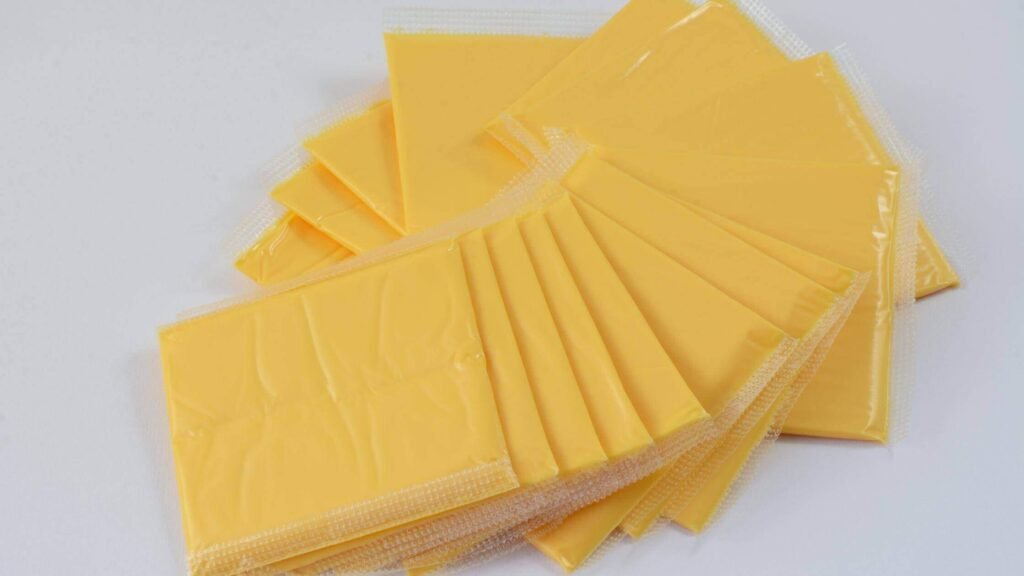
The packaging of imitation cheese can frequently be misleading, giving rise to misconceptions. Unlike authentic cheese, which derives its composition from elements such as milk fat, these imitation counterparts incorporate a blend of vegetable oils, trans fats, flavorings, and preservatives.
This makes fake cheese much less healthy than the real thing. One of the most important ways to tell them apart is by how much they cost. They are often much cheaper than real cheeses, which can be used as a clue.
American cheese is prepared from different cheeses and other substances. It’s heavy in protein, salt, and unsaturated fat.
7. Sugar-free chocolate

It’s quite reasonable to want to cut back on sugar, but it’s not a good idea to rely on sugar-free candies for this purpose. Many sugar-free alternatives use sugar alcohols such as maltitol and artificial sweeteners like Splenda. Palm oil and hydrogenated palm oil are common ingredients, as are other additives including potassium sorbate, sodium benzoate, and sorbitol.
It’s possible that engaging in a different pleasure would be more attractive. If you’re looking for a pleasure that will satisfy your sweet tooth without causing any stomach upset, dark chocolate is a better option than the aforementioned bar.
8. Commercial Salad Dressings

Vegetables definitely offer tremendous health advantages, but the problem is that many varieties lack enticing flavors by nature. Making a beautiful salad is a possibility, but in the absence of the right dressing, it might lack brightness. It’s important to remember, though, to use caution when thinking about store-bought salad dressings.
A substantial portion of these dressings is laden with unhealthy constituents, including vegetable oils, sugar, and trans fats, all of which undermine their nutritional value. Additionally, the prevalence of artificial additives further compounds the issue.
These unwanted ingredients work against the fundamental benefits of eating a salad. Making your own dressing using components like olive oil, vinegar, and a dash of salt and pepper is a preferable substitute that will maximize flavor and nutrition..
Next time you’re browsing a store’s aisles, pay closer attention to the label to make sure the item you choose is in line with your aspirations for good health.
9. Canned spaghetti and meatballs
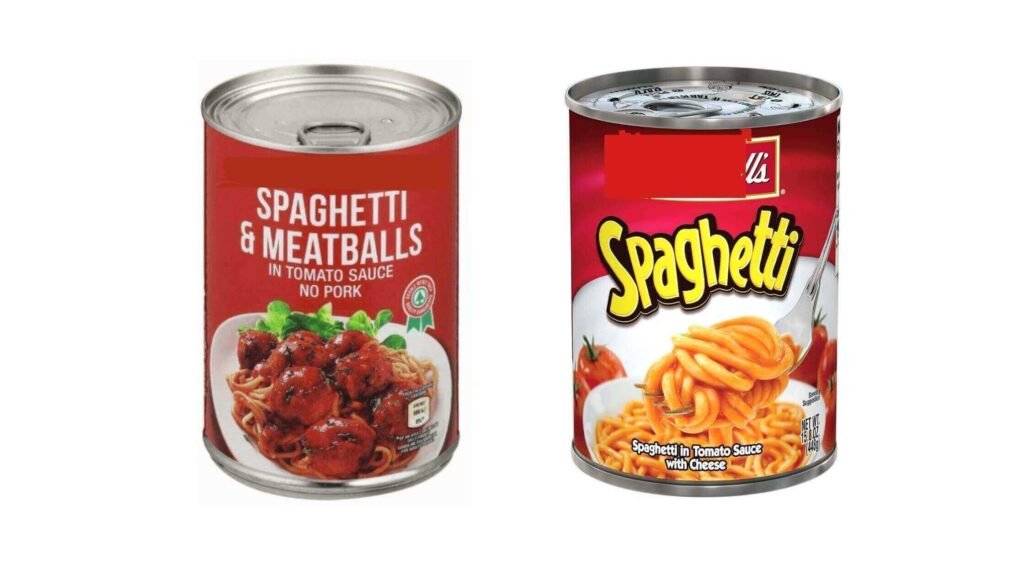
The bright colors and prominent ‘healthy kids entree’ logo on the cans of spaghetti and meatballs are only part of the unsettling marketing strategy that aims to trick parents and children into buying the food, according to Neda Varbanova, a certified culinary nutritionist.
Despite its appetizing appearance, however, this mixture has zero nutritional benefit. The combination of roughly 40 ingredients is required for the preparation of the seemingly straightforward spaghetti and meatballs dish, making it more of a sophisticated scientific experiment than a nourishing dinner.
Some of the ingredients in this long and complicated list are red flags in and of themselves. For instance, it’s concerning that ‘pink slime,’ a term for mechanically separated chicken, is used. High fructose corn syrup and dextrose, both common sweeteners, also contribute to the negative health effects.
10. Sprinkles

You’ve probably seen those delicious-smelling candles that make you want to eat them. Strangely, this is similar to what you eat when you top your ice cream. These little, delicious ice cream ornaments include only sugar, artificial coloring, and wax, like your favorite scented candles. Consider Betty Crocker Rainbow Sprinkles, which include 18 grams of sugar per two teaspoons with additives including Red 40, Yellow 5, Yellow 6, and Red 3.
Instead, add slivered almonds or cacao nibs to your favorite frozen treat to boost its texture and flavor. These ice cream alternatives add fiber and antioxidants to your snack while improving its taste.
11. Gummy Bears

There are only 0.2 pounds of delicious gummies in each bag of Gummy Bears, despite their innocent appearance. It turns out that this relatively insignificant amount actually contains the surprising equivalent of 12 teaspoons of sugar, which is a startling realization. To put this in perspective, it’s important to note that this sugar level is two to three times higher than the daily allowance for children.
In addition to the risk associated with consuming too much sugar, the artificial ingredients present in gummy bears, notably the petroleum-based colors, are cause for concern. The possibility that these chemicals could contribute to the development of issues like attention deficit disorder or hyperactivity raises concerns about their use.
While a pack of Gummy Bears from a retailer might be budget-friendly, the pertinent question surfaces: does the financial saving truly outweigh the potential toll on health and well-being?
12.Bottled coffee
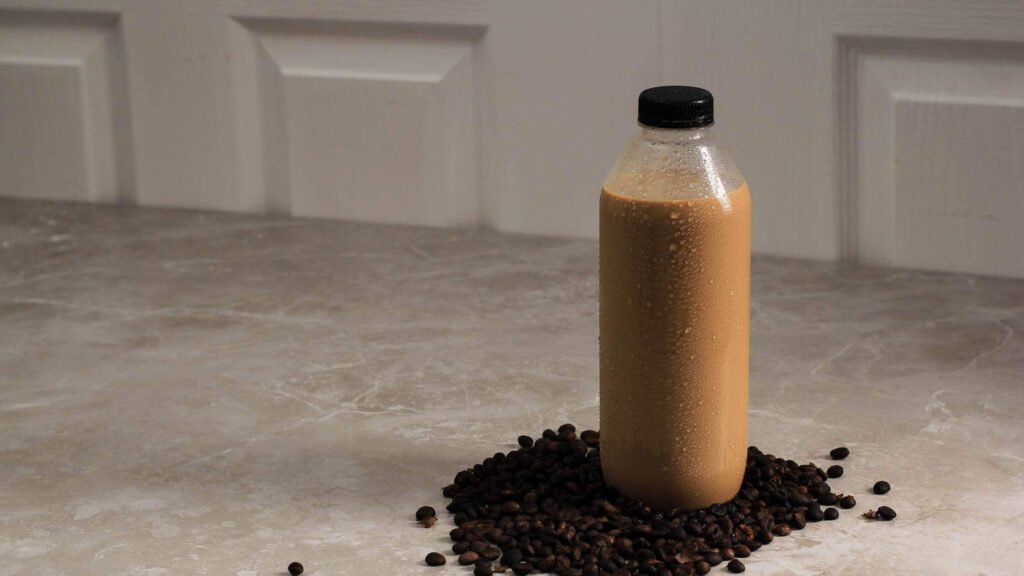
When you want a bottled coffee drink, you probably care more about getting enough energy than about what might be hidden behind the label. Unfortunately, a lot of these highly sweet drinks have way too much added sugar, which is more than the recommended daily limit.
Take, for example, a 14-ounce bottle of coffee drink. It shows a lot. Even though it looks harmless, this bottle has a whopping 270 calories and 53 grams of sugar.
Even more surprising is that the whole bottle has only 77 milligrams of caffeine, which isn’t much. This is not even close to the 166 milligrams in the same amount of plain black coffee. In the same way, other well-known bottled coffee drinks, like the bottled Starbucks Coffee Frappuccino, follow the same pattern.
13. Alcoholic Beverages

The lack of any discernible nutritional benefit in alcoholic drinks makes them a complete and utter waste of food. It’s been proven time and again that drinking is bad for our health. Alcohol’s calorie content is “empty calories,” as the human body cannot use the glucose it contains for fuel.
Therefore, the liver takes on the difficult job of metabolizing alcohol into fatty acids, which then build up in the liver. Drinking too much alcohol can have terrible effects, including the death of liver and brain cells.
In terms of calories, a normal beer can add a little over 150 to your daily total, while a glass of wine adds about 165 . On the other hand, there are only about 100 calories in a 1.5-ounce shot of liquor such as rum, vodka, gin, or whiskey . The wise course of action, then, is to enjoy these libations in moderation, realizing that doing so is the key to mitigating their effects.
14. Instant noodles
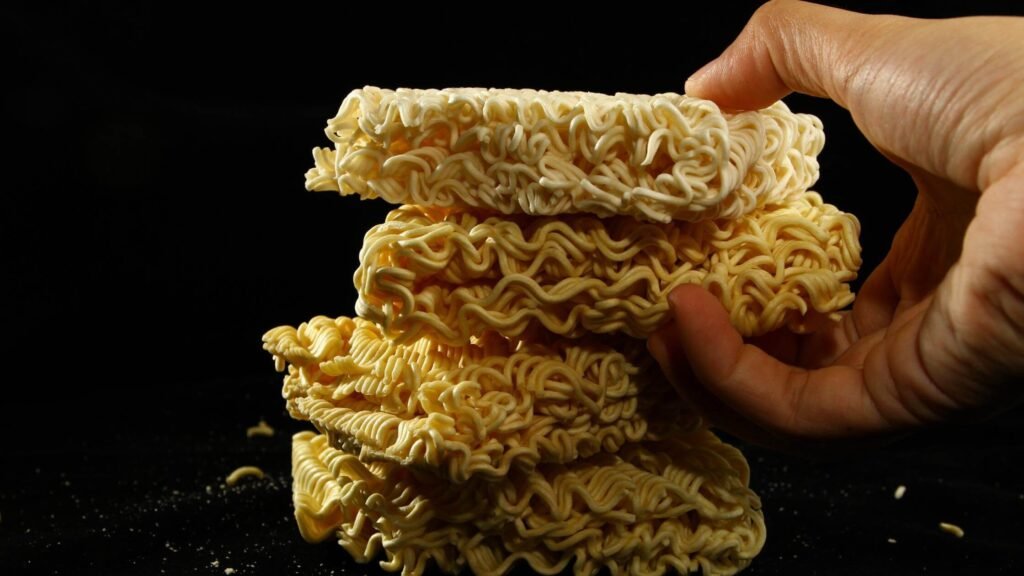
The fact that a packet of instant noodles only costs thirteen cents has made them very popular with people on a tight budget. The fact that they are easy and quick to make adds to their appeal. Still, it’s important to know that a helping of these noodles may not leave you feeling full because they don’t have much fiber.
A pertinent concern lies in the substantial sodium content prevalent in instant noodles; a single container contributes a staggering fifty percent of the recommended daily sodium intake. Consistent consumption of this product can potentially lead to a range of health issues, including elevated blood pressure and cholesterol levels, among other related ailments.
15.Water enhancers

Looking for a way to make your drink taste better? Don’t use water improvers that are sold in stores. A more worrying thing about these goods is that they often use artificial sweeteners like sucralose and acesulfame potassium, which don’t have any nutrients.
Research that was released in the journal Frontiers in Nutrition linked these sweeteners to weight gain and problems with the metabolism. Also, some boosters get their bright colors from things like Red Dye 40 that are added to them.
Instead, you can make your water healthy by putting a few slices of fruit in it. This gives the taste the boost that was wanted without the possible downsides of using artificial ingredients.
16. Ice Cream

The high levels of sugar and saturated fat in ice cream have earned it a reputation as a potentially harmful food. These components have been linked to an increased risk of obesity, diabetes, cardiovascular disease, and dental issues.
In addition to being high in calories, ice cream has very little nutritional value because it lacks many important elements. There is concern that the chemicals and artificial substances used in commercial ice cream may pose health risks to some consumers.
If you’re looking for a healthier way to enjoy frozen desserts, there are solutions made with natural ingredients, less sugar, and no dairy.
17. Chewing Gum
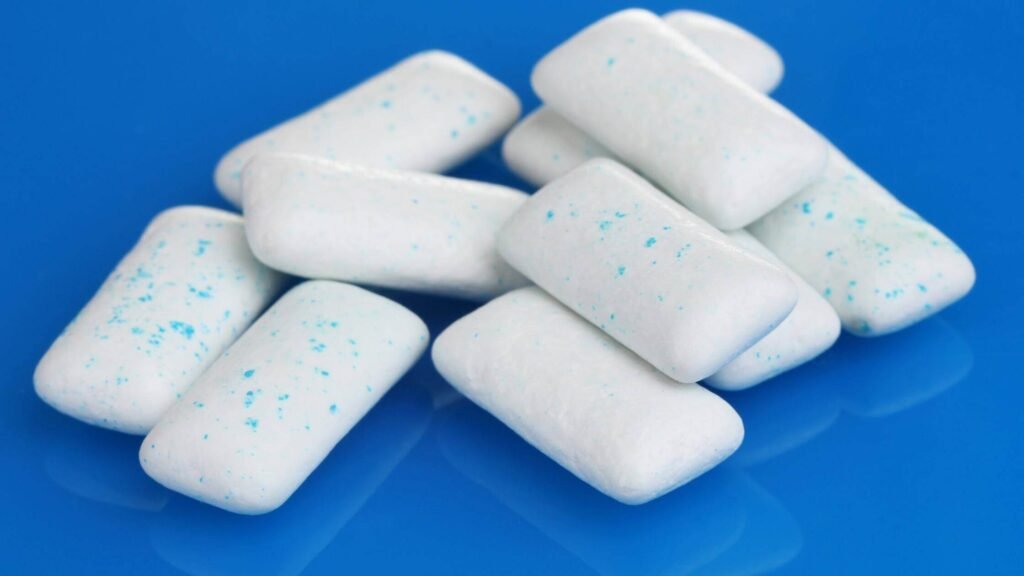
Numerous chewing gum brands tout their supposed advantages, often highlighting promises of revitalizing breath and achieving a brighter, cleaner smile. Yet, amidst these enticing claims, a range of potential oral issues surface that are intrinsically tied to gum consumption.
Some gums, especially those with a lot of sugar, can cause gut pain, diarrhea, and even jaw pain. Using gum wrongly can also cause children to choke to death.
Before grabbing a pack at the checkout of a store, it’s a good idea to think carefully about the possible consequences and weigh them against the benefits you think you’ll get.
18. Milk

It may come as a surprise, but milk isn’t actually the healthiest option you can make for your diet. In fact, there is evidence to suggest that doing so may be harmful to our health. An informative article in Discover Magazine highlights the links between milk and cancer, namely prostate and endometrial malignancies.
According to the Physicians Committee for Responsible Medicine, milk is a major source of saturated fat, which has been linked to hypertension, heart disease, diabetes, and other negative health outcomes.
The assumption that cow’s milk, designed to sustain young cows, is also perfect for human consumption is looking less and less logical as time passes. According to BusinessWire, the rise in the number of lactose intolerant people supports this opinion and may be a sign that it is time to switch to milk substitutes.
19. Fried Wontons

Crispy, deep-fried rectangles packed with savory fillings like beef, shrimp, or silky cream cheese tempt the taste receptors.
The small size of these snacks makes it easy to underestimate their power, but beware: even just a few of them can quickly turn into a massive binge.
Four of these wontons stuffed with crab and cream cheese have an incredible 311 calories and 19 grams of fat. A risky, greasy treat that goes against the grain of trying to live healthily.
20. Beer

Beer isn’t the healthiest option, and while that’s not the most pleasant truth to face, it’s important to recognize. In reality, it has been linked to a few negative aspects that should be taken into account. Beer’s association with arthritis is cause for concern, since it may cause inflammatory reactions that result in joint pain and swelling, as explained by Eat This, Not That.
Beer, as WebMD points out, might have a high calorie count, but that doesn’t always equate to feeling full. Beer’s calorie content is a cause for concern because it can contribute to weight gain if consumed in excess.
21.Frozen fish products

Suspicious activity is taking place in the frozen food section. Manufacturers frequently soak fish in a solution of sodium tripolyphosphate (STPP) to maintain moisture in lower-quality fish and reduce water loss upon thawing, a practice found in certain goods. STPP is probable neurotoxic and a registered pesticide, while being categorized as “generally recognized as safe” for human consumption by the FDA.
Surprisingly, this fish-friendly preservation procedure results in a considerable rise in the sodium level of the finished product.
This is troublesome since it contradicts the well-established cardiovascular benefits of eating fish. Furthermore, STPP can raise dietary phosphate levels, which has been linked to an increased risk of cardiovascular disease-related mortality in people with chronic kidney disease or pre-existing heart problems.
22. Chocolate-Covered Rice Cereal

Chocolate-covered rice cereals often hold the spotlight as a seemingly appealing breakfast choice for young ones. However, the concealed truth behind their advertising is that they rank among the most detrimental cereal options available.
A single serving of this cereal contributes a staggering 55 to 73% of the daily recommended sugar intake for children. The concerning aspect doesn’t stop there; numerous variants of these cereals also contain colorants that have been linked to the potential development of hyperactivity and attention deficit disorders.
The difference between how these cereals are sold and how they actually affect your health makes it important to look at them with more care. It serves as a warning that behind the appealing look is a food that could be harmful and should be thought about carefully before being added to a child’s diet.
Many breakfast cereals contain sugar and refined carbs, despite what the box says is good for you.
23. Baklava or Baklawa

Baklava is a dessert or delicacy from the Middle East that is famous for its honey flavor and light, flaky crust. It comes in several forms and can be made with nuts like pistachios, walnuts, or others, so it may not look as decadent as other sweets. However, despite its tempting appearance, baklava may be shockingly high in unhealthy ingredients like fat and sugar.
According to LiveStrong, just one serving of baklava can have more than 230 calories, 11 grams of fat, and 17 grams of sugar. The allure of baklava’s flavor is undeniable, but eating too much of it can have serious health repercussions, so moderation is key. This is especially important to keep in mind when considering going back for seconds.
Related: What Is The Healthiest Food We Can Eat? Top 10, Debate Ended
24.Boxed Cake Mixes

What better way to say “Happy Birthday!” than with a sweet slice of cake? Choosing to make a cake from a pre-packaged mix is much easier than finding all the different ingredients and starting from scratch.
But it’s important to know that this cooking trick could hurt your health. There are a lot of cake mixes on the market, and many of them come from well-known companies. These cake mixes are often sweet, but they also have a lot of stomach-bloating sugars, iffy additives, and hidden unhealthy fats. These parts aren’t really worth celebrating and having fun over.
25. Sugar-free jam
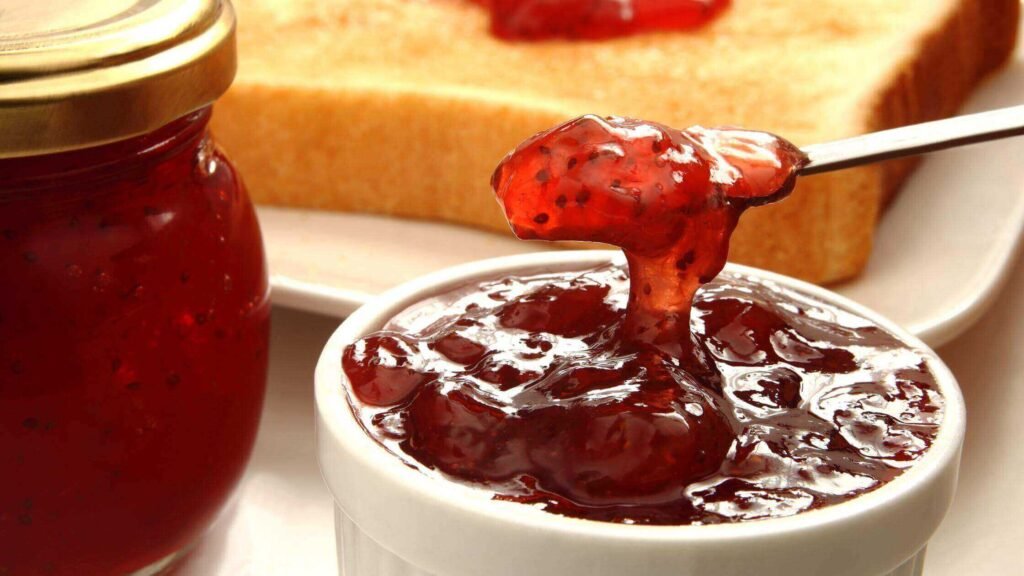
While Polaner’s Sugar-Free Jam might assist in blood sugar regulation, it’s not the ideal fiber source. The jam contains sucralose, an artificial sweetener that a 2020 study in the Nutrition Journal suggested could affect insulin resistance in “healthy” adults.
A better option is to enhance your peanut butter sandwiches with slices of fresh fruit such as bananas and strawberries. This choice provides a comparable flavor profile without resorting to artificial sweeteners.
26.Grilled cheese
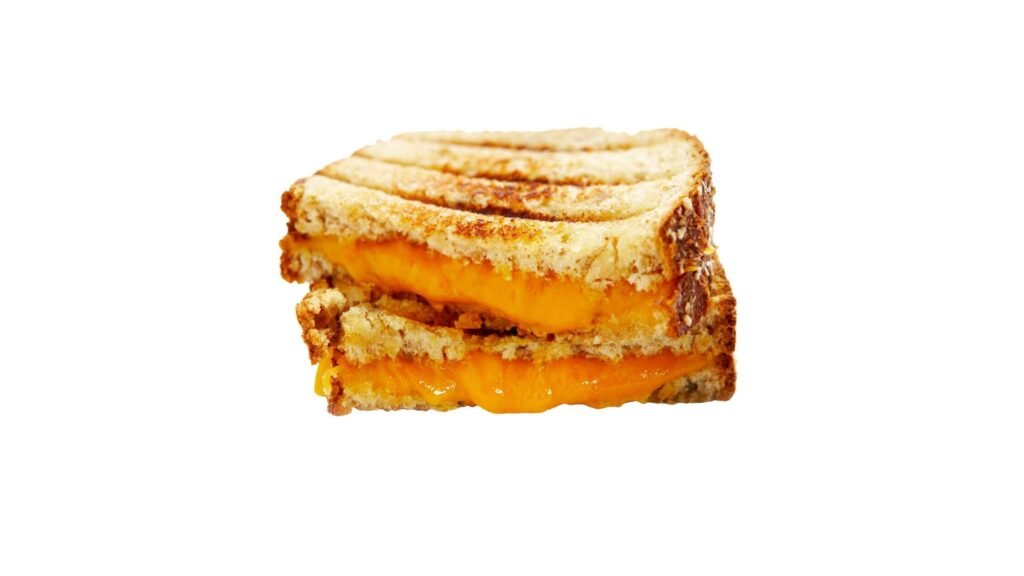
American cheese has been previously identified as one of the unpleasant items on this list, however, grilled cheese sandwiches remain a popular comfort meal option. While there is the option of using a healthier cheese, the white bread that is typically used for this sandwich also falls short on the nutritional front.
Many people also add even more unhealthy fats like oil or butter, to the pan before they start cooking. A grilled cheese sandwich may represent an accumulation of less-than-ideal food options.
A single serving of a grilled cheese sandwich can have about 500 calories, according to the data provided by Healthline. The high levels of salt and saturated fat only make matters worse. The sandwich is not a healthy option because it has no fiber. Considering these facts, it’s clear that grilled cheese sandwiches are best reserved for special occasions.
27. Kids’ Yogurt Cups
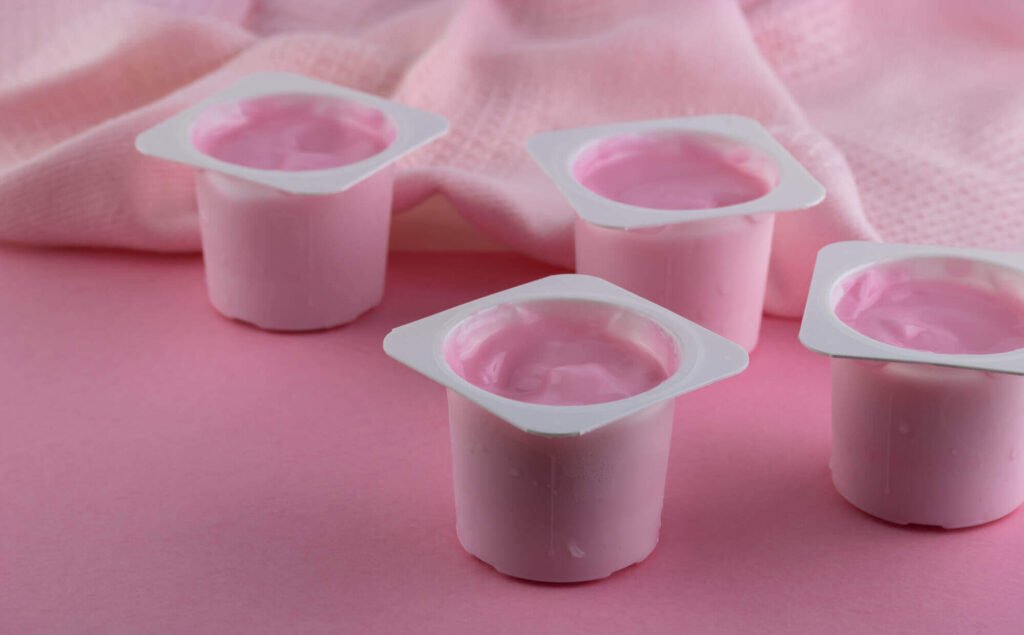
Numerous brands pledge to nurture the healthy growth of children, yet the reality often diverges significantly. Yogurt cups targeted at youngsters, despite their outward promises, primarily consist of a blend of sugar, fat, and artificial colorants—components that, when consumed excessively, usher in an array of potential health hazards.
Diabetes, metabolic diseases, heart problems, and the threat of becoming overweight are all part of this group of risks. Adding to these worries is the fact that some goods have too much fat, which can turn into cancer-causing agents.
Yogurts like these may seem like a good idea because of the calcium they contain, but the potential harms should not be overlooked.
28. Commercial Hot Sauce

Without a doubt, spicy sauce is at the top of the list when it comes to people’s favorite condiments. Its extraordinary adaptability makes it ideal for a broad variety of cuisines, from simple snacks to elaborate gourmet entrees. You’d be hard-pressed to find a meal that doesn’t get more exciting with the addition of hot sauce.
Even if its blazing heat is irresistible, you should be aware of the dangers it poses. The spiciness that makes hot sauce so appealing can also have negative effects on the lining of the stomach and lead to gastritis.
Therefore, finding a happy medium is essential. It’s smart to use caution when consuming this product because of the risks it may pose to your health. Prioritizing our health is essential, regardless of how cheap it could be on major online marketplaces.
29. Cheesecake

Although widely enjoyed, cheesecake has been given the dubious honor of “worst dessert” by Eat This, Not That! This isn’t a judgment about the taste, but rather a blunt admission of the harm it does to one’s body.
The reasoning behind this labeling comes from cheesecake’s high calorie count, with a single slice often containing more than 300 calories. Cheesecake is a strong foe in the arena of healthy options, and not only because of its high calorie count. The dessert is generally loaded with processed ingredients and unhealthy fats and sugars.
The occasional slice of cheesecake is fine, but we should remember that our bodies have their limits. Cheesecake is best saved for rare occasions due to its high calorie and fat content.
30. Coffee/Caffeine

Undeniably, coffee stands as a globally cherished beverage, woven into the fabric of daily routines for countless individuals. It’s a cornerstone of morning rituals, whether enjoyed steaming hot or refreshingly cold.
The infusion of energy it provides to kickstart the day is undeniable, yet it’s essential to acknowledge the flip side: excessive consumption can cast a shadow over its benefits and affect our well-being.
If you drink more coffee than is considered healthy, you may experience negative side effects like insomnia and headaches. This mixture may worsen anxiety and lead to cardiovascular disease. Famous Cafe’s massive financial success is proof that coffee’s addictiveness promotes consumption patterns.
Recognizing the delicate balance between enjoying the energizing embrace of coffee and safeguarding our health necessitates careful consideration. While it remains a comforting companion for many, its impact on our overall well-being underscores the need for mindfulness in our consumption habits.
31. Meat
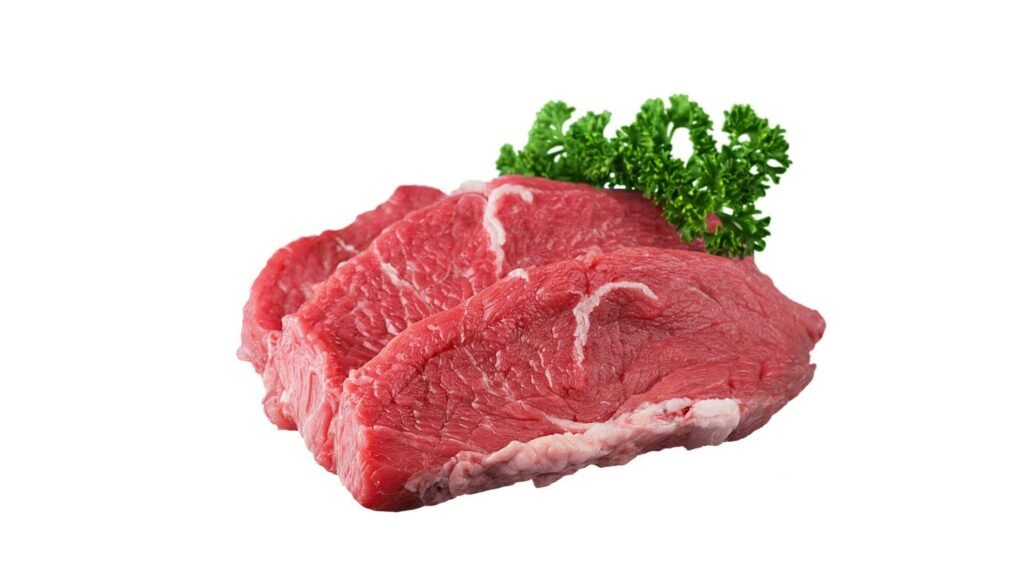
Meat, with its many beneficial components, has long been hailed as an essential part of a healthy diet. However, it’s important to recognize that there are inherent health concerns associated with excessive meat consumption. Modern meat frequently contains pesticide residues that were fed to the animals and are subsequently consumed by humans.
A large part of red meat contains hormones and antibiotics used to accelerate animal growth. On industrial cow farms, hormones including testosterone, estrogen, and progesterone can be accidentally transferred to people and cause health problems. Despite being a healthy protein source, fish can accumulate heavy metals like mercury, which can cause health problems.
Corporate titans make huge profits despite these health risks. The conflict between health and industrial profits complicates our nutrition choices, pushing us to choose carefully.
32. Jello
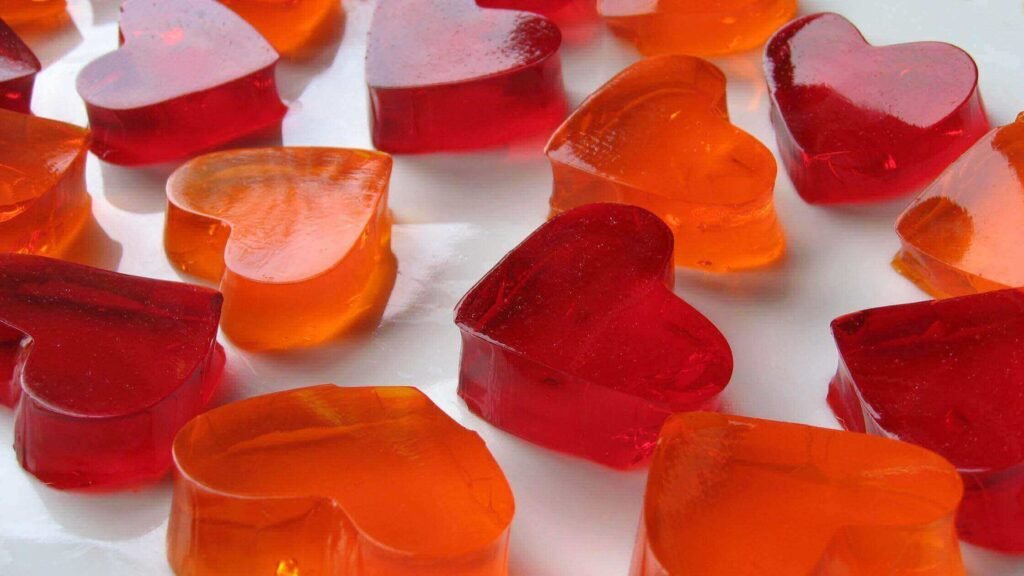
Jello, famous for its characteristic jiggly texture, is often made with animal gelatin. While many people enjoy eating this type of food because of its humorous and pleasurable qualities, the health risks associated with it are not ideal.
Although some people may not be turned off by the fact that Jello is made from animal bones, tendons, and other connective tissues, its low nutritional value should be taken into consideration.
Jello may be tempting to folks who enjoy eating sweet, gelatinous delicacies colored with artificial food colors. If you’d rather go the healthier route, though, you might want to pass on this.
33. Flavored Popcorn
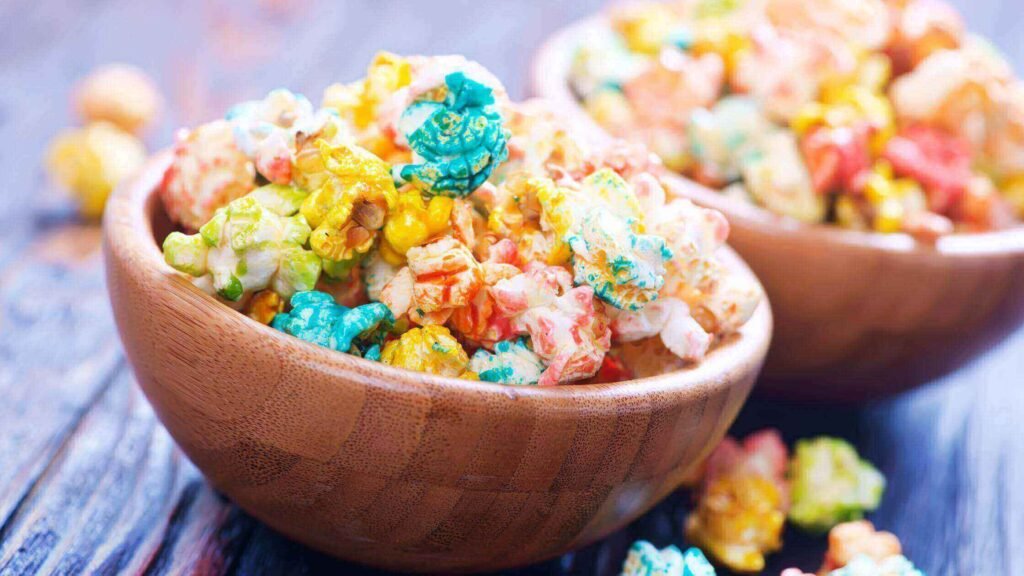
Indeed, natural popcorn possesses the potential to serve as a delectable and health-conscious snack, given its low calorie profile. Regrettably, the pre-packaged versions lining supermarket shelves veer in almost the opposite direction, particularly due to the incorporation of artificial flavorings. Notably, caramel popcorn serves as an illustrative example, concealing an excessive amount of sugar and fat.
Even a little pouch of caramel popcorn has 12.8 tablespoons of sugar and 564 calories. The difference between advertised appeal and nutritional reality emphasizes the importance of snack selection. Crafting popcorn at home without flavor enhancers is a healthier and tasteful alternative.
34. Artificial Orange Juice

While the sweet flavor of orange juice substitutes may be irresistible, it’s probably best to cut them out of your daily routine. Sugar, synthetic coloring agents, and artificial sweeteners are commonly hidden in these drinks, and they have almost little nutritional value. Contrarily, they perform even worse than conventional orange juice, which is likewise high in sugar and should be eaten in moderation.
Remarkably, there have been instances that underscore the potential hazards of excessive consumption. A pediatrician reported a child’s skin becoming yellow after eating too much of a brand. This incident, which resulted from a 1.5-liter daily intake, draws attention to the artificial drink’s potential health risks.
Water consumed at such volumes wouldn’t have similar effects. Despite their appeal, these drinks’ long-term health effects must be considered. Natural orange juice or whole oranges are more nutritious.
35. Iced Tea
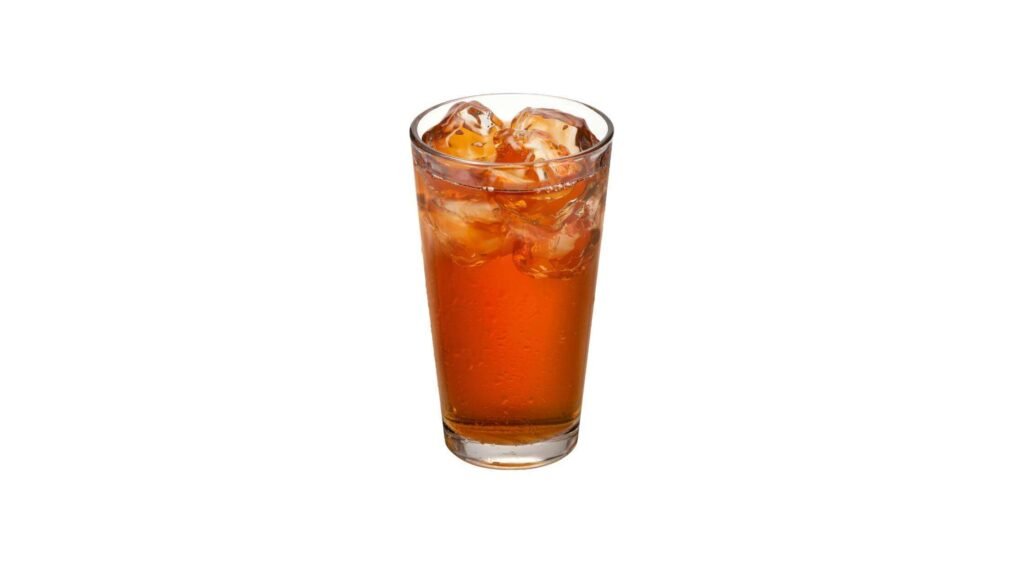
Iced tea often presents itself as a refreshingly light and seemingly health-conscious choice, seemingly a close cousin to the tea we brew at home from teabags. However, appearances can be deceiving, and this beverage shares more similarities with sugary soft drinks than its traditional counterpart.
The shocking amount of sugar in one bottle of bottled iced tea is 12-ounce (oz) bottle, a whopping 31 grams (g) of added suga. When you consume so much sugar all at once, your body’s insulin levels are likely to surge dramatically, increasing your chance of developing diabetes.
Because of this depressing information, a new perspective on iced tea is required. It has all the charm of a regular cup of tea but none of the health benefits. If you want to make sure that what you’re drinking is actually helping you achieve your health goals, you need to be pickier about the drinks you choose.
36. Pork
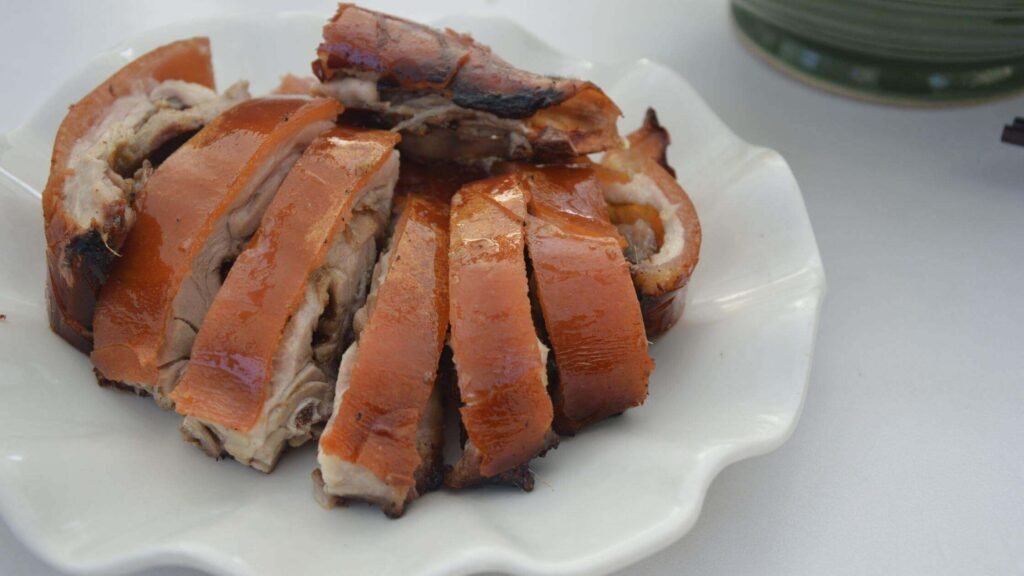
The wide variety of pork products on the market may seem like a boon to consumers, but they all have serious health hazards. Whether it’s ham, ribs, or another part of the pig, eating it is one of the worst things you can do to your diet. Numerous studies, including some from the National Institutes of Health, have found disturbing links between eating pork and health problems.
According to the NIH, studies have found that there is a link between eating pork and developing cirrhosis, and that hepatitis E could be transmitted to humans through eating pork liver.
According to LiveStrong, the increased levels of saturated fat in pork products raise the risk of cardiovascular disease and different malignancies. When pork is not properly prepared and managed, it can cause serious food poisoning and even parasite infections, therefore, its consumption comes with a danger.
37. Regular Cola
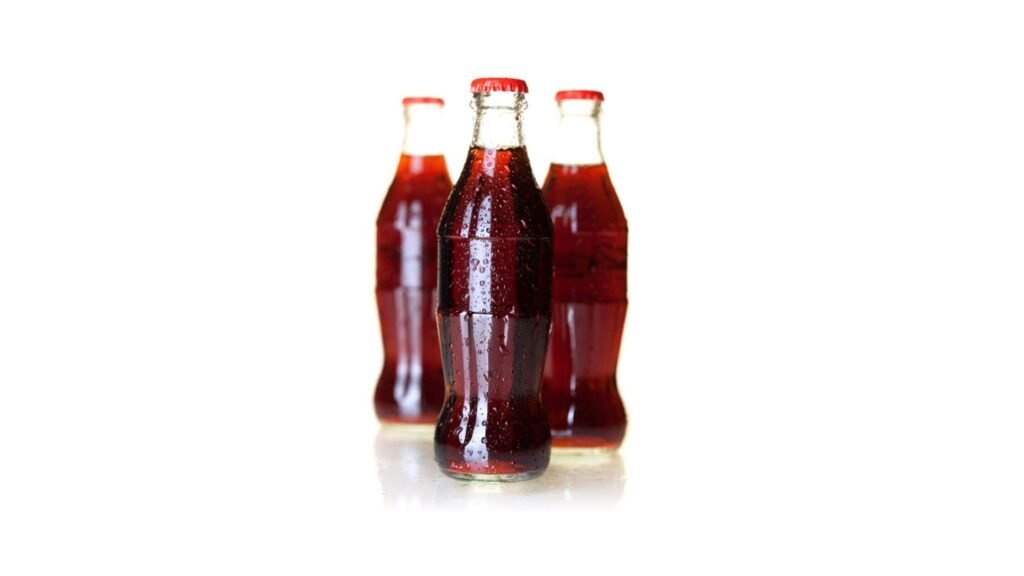
The detrimental impact of cola on our health has been widely discussed, with even diet variations raising concerns. Have you ever delved into the precise reasons behind this? In a single can of regular cola, a 39+ grams of sugar, which is equivalent to 9.8 teaspoons of sugar, exceeding the recommended daily value by 100%.
Beyond this overwhelming sugar content, cola harbors several other unhealthy ingredients. Phosphoric acid, found in this soda, is known to be detrimental to bone health. The fact that the color used in its production includes carcinogenic ingredients like ammonium and sulfides further adds to the worry.
Despite our continued love of cola, these facts leave an unpleasant aftertaste. The seemingly harmless beverage is associated with a wide range of health risks that should make us rethink our beverage preferences. Consumption mindfulness helps us strike a balance between our taste preferences and our health and wellness.
38. Pork Rinds

It’s technically correct to classify pork rinds as keto-friendly due to their carb-free nature. Yet, it’s vital to draw a clear distinction between them and nutrient-rich options like spinach and broccoli. These crispy, fried snacks may lack carbohydrates, but that doesn’t equate them with wholesome choices.
Pork rinds boast high levels of saturated fat, sodium, and calories. Therefore, it’s not a good idea to regularly treat yourself to a big bag. Consequences of excessive intake include hypertension, obesity, and an increased danger of developing diabetes and cardiovascular disease. Despite the claims made by pork rind makers, who tout the product’s high protein content (9 grams per serving), pork rinds are not a healthy option.
Recognizing the pitfalls that can stem from excessive consumption, it’s imperative to exercise moderation and discernment when incorporating pork rinds into one’s dietary repertoire.
39. Refried Beans

Homemade beans stand as a prime example of a nutritious food, rich in both fiber and protein and offering valuable benefits to the body. However, the processed counterpart of these beans, although convenient and adaptable, doesn’t fare as well in the health department.
Refried beans, in their processed form, tend to be laden with excessive sodium and saturated fat. The health issues that this uncomfortable combination can result in include hypertension, obesity, and high cholesterol.
This finding further highlights the distinction between the health benefits of handmade beans and the potential dangers of their processed versions. Our diet has a major impact on our health, so it’s important to remember to choose whole, unprocessed foods wherever feasible.
40. Potato Chips
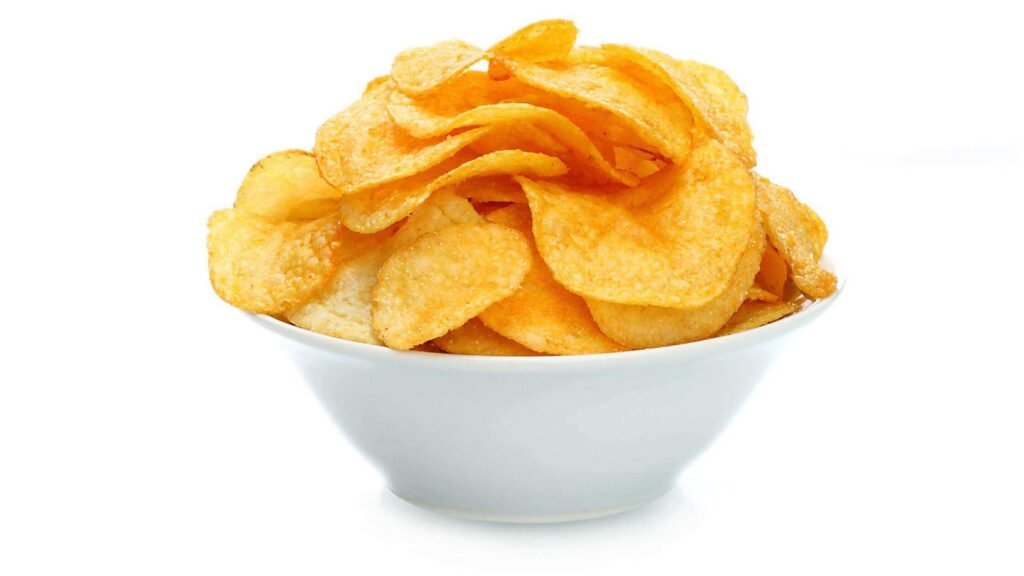
Most commercially available potato chips contain a number of unhealthy additives, such as artificial flavors and colors made from petroleum, high levels of saturated fat, and refined carbohydrates. Concerns are further heightened by the fact that just 0.11 pounds of these chips accounts for 32% of the RDI for salt.
The similarities between French fries and the universally appreciated snack food are striking. Monosodium glutamate (MSG), a common ingredient in French fries, is a flavor enhancer that can lead to overeating. The popular catchphrase “You can’t eat just one” refers to this psychological barrier.
The convergence of these revelations highlights the array of factors working against mindful consumption of these snacks. The understanding of their ingredients and their potential effects underscores the importance of approaching such foods with prudence while also seeking alternative options that align with a balanced, health-conscious lifestyle
41. Canned Tuna
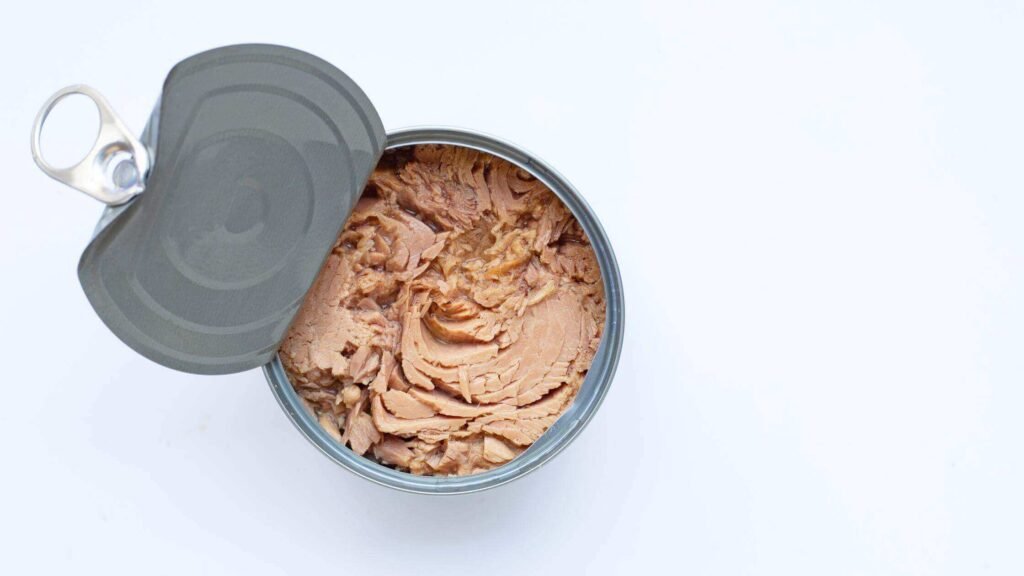
Tuna has often been championed by nutritionists as a favored food for weight loss regimens, given its protein-rich, low-carb profile. Its prevalence in high-protein, low-carb diets has contributed to its reputation as a weight-loss ally.
However, there is an important caution to consider before making canned tuna a regular part of your diet: it may contain mercury. This element is highly risky, even in tiny amounts; it can disrupt the function of the neurological, immunological, and digestive systems.
These factors converge to stress the importance of taking a holistic approach to eating more tuna. While its nutritional value is undeniable, it should be consumed with caution due to the presence of mercury. Informed decision-making, including the consideration of health consequences, is essential for preserving health.
42. Chocolate Milk

Chocolate milk is loved by kids and adults for its delicious taste and nutrients, including calcium, Vitamin D, and protein. Enjoying a small amount occasionally is safe, but overuse of this sugary beverage may lead to weight gain and chronic diseases.
Chocolate milk has nearly as much sugar as soda, with 25 grams and a lot of calories per cup. This revelation prompted a reevaluation of its place in our diets, especially since many U.S. youngsters are overweight or obese.
These insights encourage us to consider our drink choices, especially for children’s health. Chocolate milk has benefits, but we should measure them against its health risks to make better beverage choices.
43. Creme Eggs

A closer glance reveals that each egg contains an astounding 26.5 grams of sugar, despite their unmistakable sweet charm. When you consider that the recommended daily allowance for sugar is roughly 30 grams, you’ll see that eating just one egg uses up almost all of your sugar for the day. The spirit of moderation sounds loud and clear here, despite the fact that the temptation is great.
Despite the temptation of seasonal favorites, it’s important to make healthy decisions because of the negative effects sugar can have on our bodies. Cadbury Crème Eggs are a treat that should be enjoyed in moderation if you want to satisfy your sweet taste without compromising your health.
44. Frozen Vegetables

We strongly recommend eating veggies, and if frozen vegetables fit your tastes, there’s no reason to throw them away. But it’s important to note that you might need to eat more frozen veggies to get the same health benefits as fresh ones. Freezing does have the benefit of keeping some of the nutrients in veggies and fruits that would otherwise be lost.
Still, it’s important to be aware of how long it takes to freeze. When food has been kept for more than a year, the nutrients can start to break down. Also, the blanching process that is part of freezing causes some vitamins and minerals to be lost, with the biggest loss happening during this step. To get the most out of the nutrients in frozen veggies, it’s best to eat a lot of them right away after defrosting them.
Even though frozen veggies are still a good choice for your diet, you can make better decisions about how much you eat if you understand how their nutrition works. Choosing foods that are both easy and good for you will help you get the most out of what you eat.
45. Donuts

Donuts are definitely one of the most popular treats, and they come in a wide range of flavors, fillings, and decorations to suit many tastes. But along with their appeal come some important worries that need to be thought about.
Even though donuts have a lot of sugar on their own, the way they are made makes the problem even worse. Donuts that have been fried are full of trans fats, which are very bad for your health. This is especially important for people who want to be as healthy as possible, since eating donuts every day isn’t a good idea.
Considering how well the tastes and worries of these treats go together, it’s important to treat them with care. The key is to enjoy them occasionally and be aware of how they affect your diet. A key part of making healthy food choices is finding a mix between enjoying their indulgence and protecting your health.
46. Hot Corn Chips
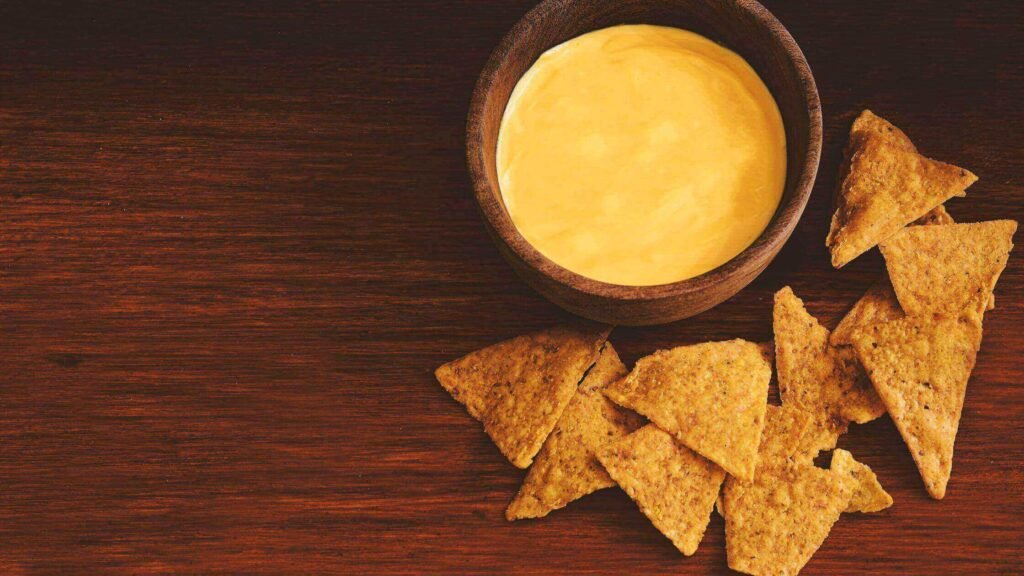
Spicy snacks are very popular, but their nutritional value raises serious issues that need to be looked into. Even though these snacks taste good, they don’t have much nutritional value, which raises a number of concerns. Some of these snacks have a lot of salt, calories, saturated fat, and even trans fat, which could be bad for your health.
These chips can lead to high blood pressure and the start of diseases of the heart and blood vessels. Red dye, which is often found in these snacks, has been linked to the growth of cancer, which makes people even more worried.
In light of these disturbing facts, it’s important to think carefully about the snacks you choose. Even though spicy snacks are still appealing, their effect on health shows how important it is to be careful about how much you eat. When you go to the grocery store, it’s important to think about how you might have to choose between taste and health.
47. Fried Chicken
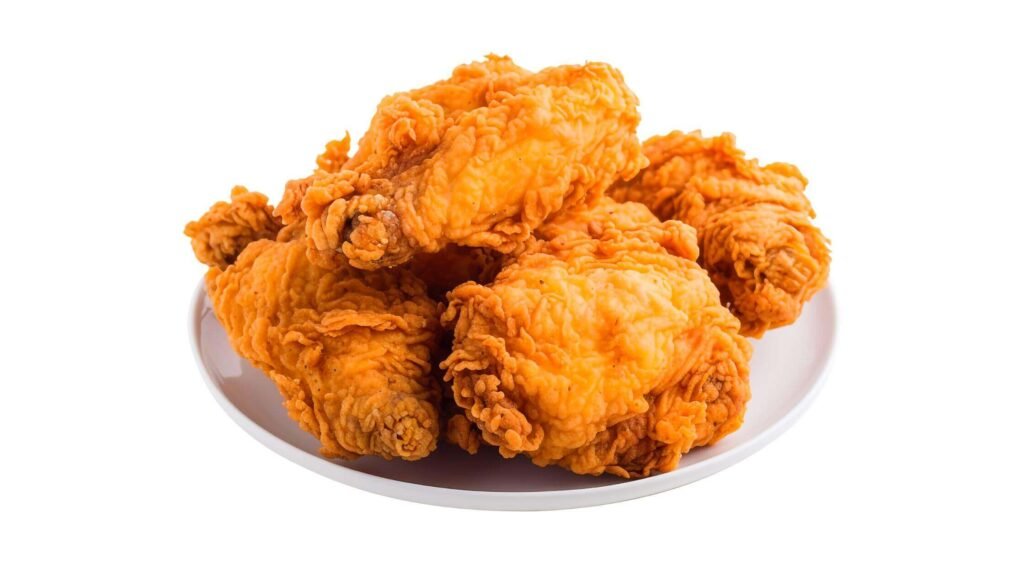
When talking about fried chicken, there are a lot of health issues that need to be thought about carefully. The fact that cooking involves putting something in oil is a warning sign in and of itself. This problem is made worse by the fact that making fried chicken usually requires a lot of flour.
The number of calories is another problem, and fried chicken usually has a lot of calories. This way of eating can lead to a wide range of problems, such as weight gain and the possibility of getting diabetes and heart disease.
If you like chicken as a source of energy, you might want to try other ways to cook it, like grilling. This change is better for your health because it keeps the nutritional benefits of chicken while avoiding the problems that come with frying it. To make smart food choices, you need to try for a sensible approach where taste and health are in sync.
48. Prepackaged Hamburgers
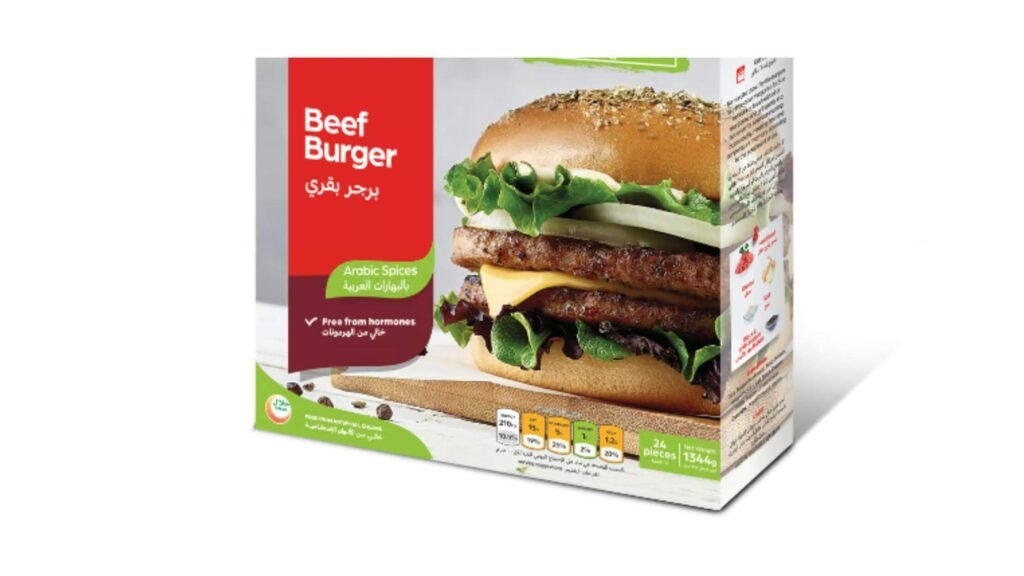
Prepackaged or preformed burgers often get people’s attention because they are easy on the wallet. This makes them a good choice for many. But to save money, these burgers are often made with meat that isn’t clear where it came from, which hurts both quality and openness.
Surprisingly, many burger signs say that “meat” only refers to a certain amount of the burger’s ingredients. The rest of the makeup could be made up of many different things, from soy to animal parts like hides. Sadly, this information is often left off of signs, which prevents people from getting a full picture of what they’re eating.
This news shows how important it is for consumers to know what they are buying. Even though premade burgers might seem easy and cheap, they might not be as good as they seem. Putting quality over price and looking for options that are ethically sourced can be very important for both your health and your morals.
49. Sausages
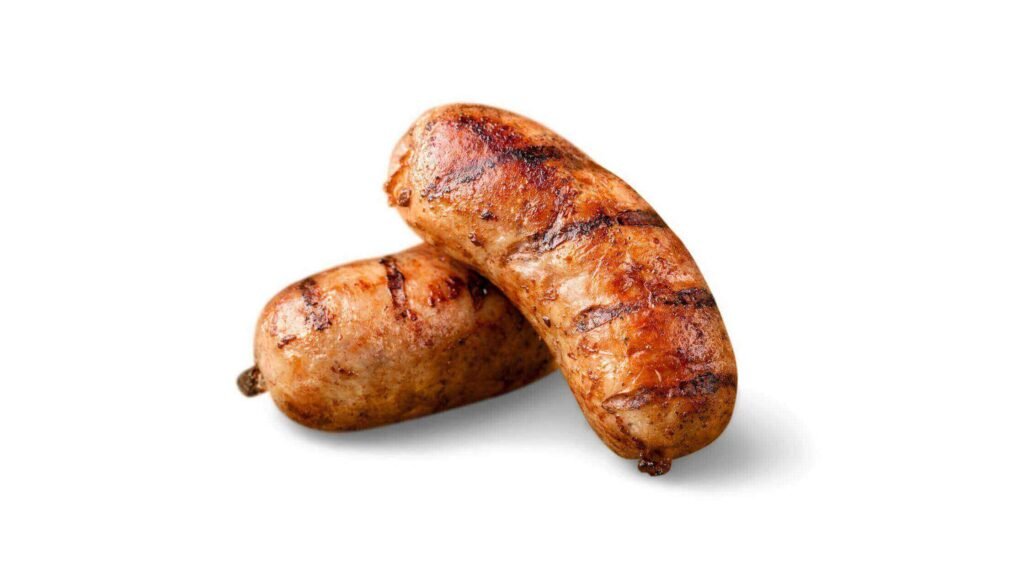
Sausages are known for being versatile in the kitchen and can be cooked in many different ways to suit different tastes. Still, they are not the best choice for people who want to eat well. Their biggest worry is that they contain a lot of heavy fat.
Unfortunately, sausages have more things that make them unsettling. Sausage always has a lot of salt and nitrates, which are both known to cause cancer. If this product is used too much and for a long time, it could lead to obesity and make people more likely to have heart attacks and strokes.
The fact that sausages can be used in many different ways and aren’t very good for you makes it clear that you should be careful about how much you eat. How sausages affect your diet depends on how you balance your taste preferences with your health concerns and how careful you are about where you get them. Making decisions with awareness is in line with the goal of long-term well-being.
50. Hamburgers

Burgers, which are one of the most famous types of fast food, have been linked to weight gain for a long time. But eating burgers is dangerous for a lot more reasons than just gaining weight.
Fast-food sandwiches have a lot of things that aren’t good for you, like a lot of saturated fat, sugar, and sodium. These parts are not good to many of the body’s systems, like the circulatory, mental, and digestive systems. The effects are bigger than just the number of calories, because these ingredients could have big effects on health.
Adding to these worries is the fact that the products used to make these burgers have a lot of calories but not much nutritional value. This difference between taste satisfaction and health protection shows how different they are.
Since burgers are still a popular food, it’s important to think carefully about them. When deciding to treat yourself, you should think about how it might affect your health as a whole.
51. Salt
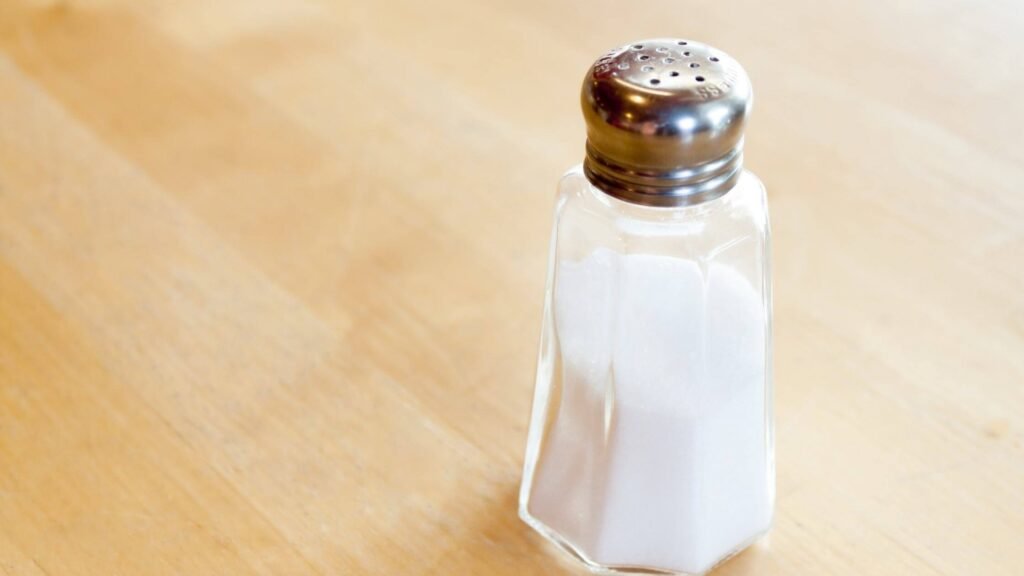
There is evidence to support the widely held belief that limiting sodium intake is essential for a healthy diet, and this has significant implications. One major issue that arises is the stress that is put on the heart and blood vessels when too much salt is consumed.
Consuming too much salt can have far-reaching effects because of its ability to boost blood pressure. Heart attacks, strokes, and the start of heart and renal failure are just some of the dire consequences that can result from this escalation. Another hidden danger of salt is that it is very addictive since it triggers cravings in the body.
This comprehensive viewpoint emphasizes the significance of carefully monitoring salt consumption. Knowing the correlation between salt and its health effects is important for more than just making smart food decisions. By controlling our use and actively searching out healthier options, we can protect our hearts and reduce our propensity to get addicted.
52. Supermarket Honey
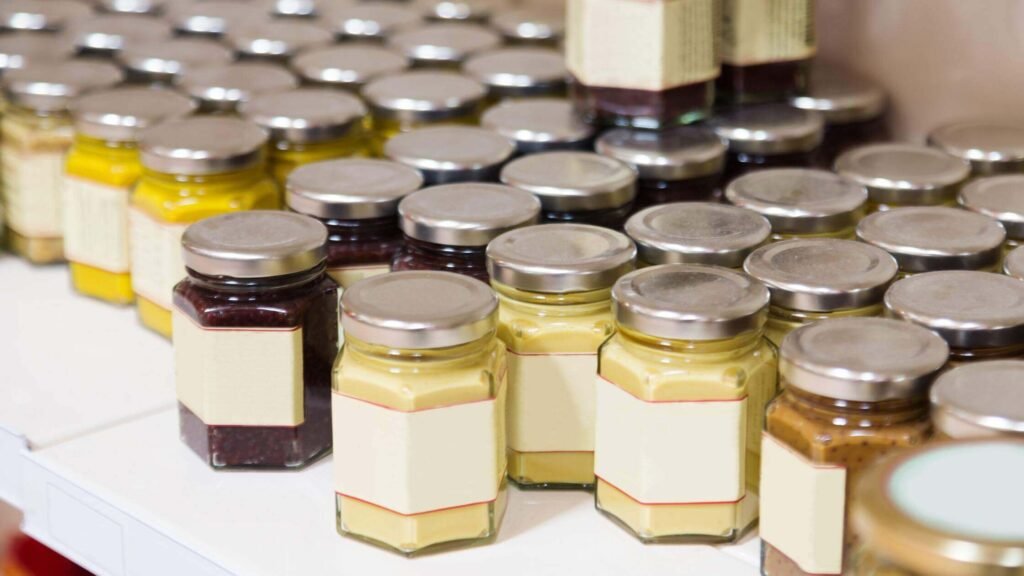
Honey has become a popular sugar alternative due to the widespread belief that it is healthier than white sugar. Honey has been shown to have multiple health benefits, including but not limited to increased blood antioxidants, improved heart health, and aided wound recovery.
Using honey as a sugar substitute has some positive effects, but it must be used sparingly. The high calorie and sugar content of honey might have negative effects if ingested in large quantities. To get the benefits of honey while minimizing the risk of bad effects, it is best to limit daily consumption to one teaspoon, as is recommended for people who are not overweight.
53. White Pasta
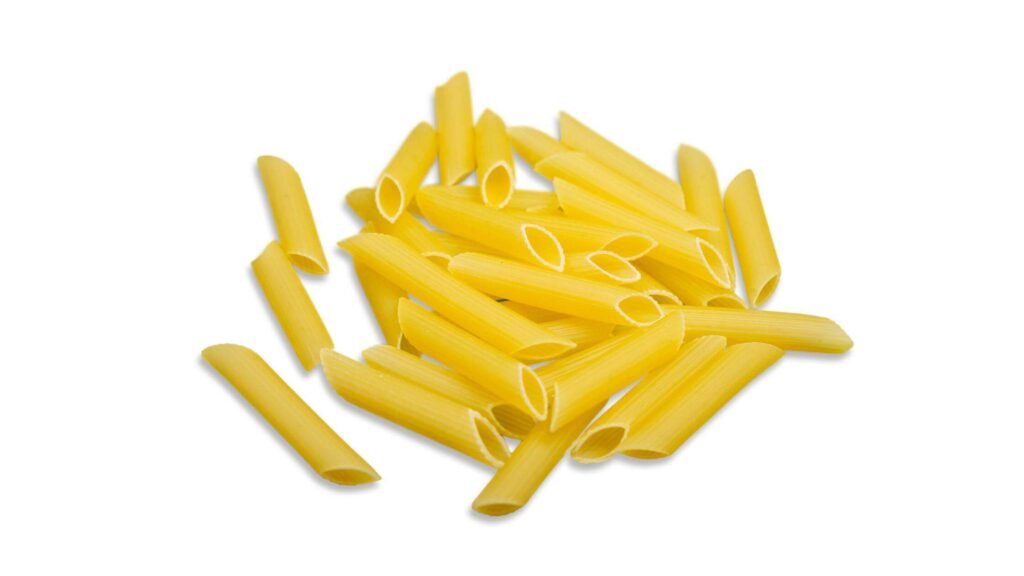
Known as “white carbs,” simple carbohydrates are refined during processing to remove germ and bran. These carbs include white pasta, rice, and bread. The appeal of these carbs masks their drawbacks, including metabolic breakdown-induced weight gain.
After eating white spaghetti, the body quickly turns carbohydrates into glucose, raising blood sugar. This increases appetite later on, causing people to overeat. Notably, white spaghetti lacks nutrients needed for prolonged health. To traverse the shopping aisle effectively, choose whole wheat noodles to get necessary nutrients for your diet.
54. French Fries
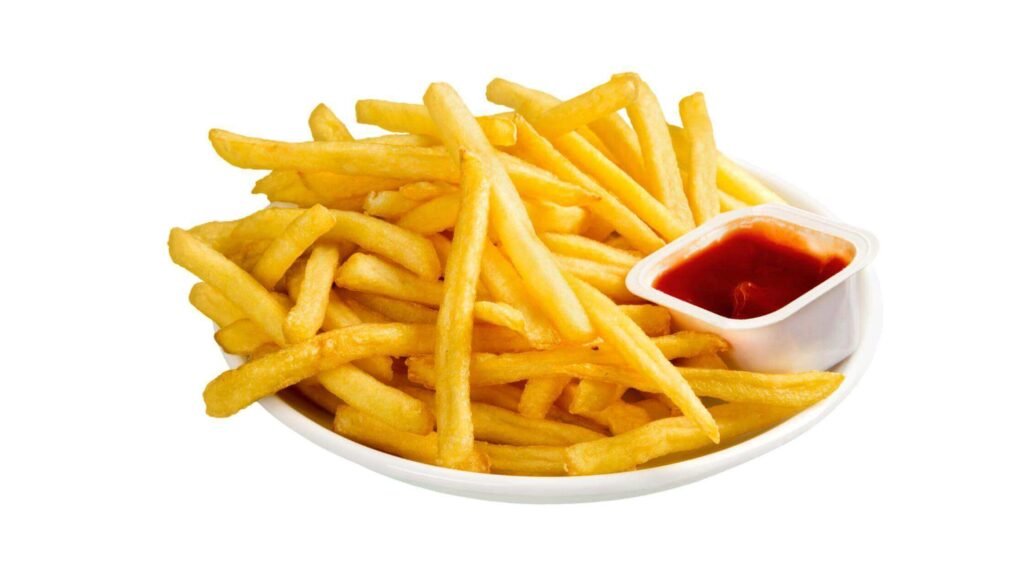
Despite their widespread popularity, French fries should be eaten in moderation. A new study found that eating fries twice or thrice weekly can treble your risk of dying prematurely. Acrylamide, a carcinogenic compound created when food is cooked at very high temperatures, may be linked to this increased concern.
Because to the heating process, this chemical is frequently seen in French fries. In addition, the flour, salt, and oil content of these fried snacks is usually quite high. In light of these issues, it’s wise to seek out healthier alternatives to traditional side dishes wherever possible.
55. White Chocolate

White chocolate is typically differentiated from “true” chocolate on the basis of this characteristic. This is because cocoa solids are not used in the production of white chocolate, which is instead made from cocoa seed butter. Milk and sugar are added to the buttery mixture to improve its flavor.
Essentially, white chocolate is made up of mostly fat and sugar. Unfortunately, this sweet still has the same amount of calories despite the cocoa’s health benefits.
As a result, anyone trying to lose weight or manage health issues like diabetes or high cholesterol should approach eating white chocolate with caution. White chocolate’s minimal nutritional content, despite its overwhelming attractiveness, requires careful consideration when making dietary decisions.
56. Century Eggs

In certain cultures, century eggs hold a reputation as delicacies. Visually, they might not win any beauty contests, being preserved eggs that have aged for years. Yet, does their unconventional appearance translate to health concerns?
Not exactly. Century eggs do offer certain health benefits, although their protein content doesn’t always lend itself to easy absorption compared to regular eggs. While they don’t pose any harm, they might not match up to the nutritional goodness of farm-fresh eggs. Nevertheless, their distinctive flavor finds favor with many, even though they might not be as healthful as their freshly laid counterparts.
Consuming century eggs in large quantities may not be healthy due to their high sodium content. Additionally, century eggs are high in cholesterol and should be consumed in moderation.
57. Protein Drinks And Bars

There are hidden dangers lurking in the world of protein bars and powders. These on-the-go munchies may seem like a good idea when you don’t have time to prepare a full meal, but before you buy, it’s important to read the ingredients list. The difference between gaining weight and losing it can be as little as a few seconds’ worth of intense inspection.
The new information on several protein supplements is really troubling. Many of the options have extremely high levels of added sugar, with some having as much as 23 grams of sugar per scoop, as evidenced by research from Harvard Health. A glass of milk with this seemingly innocuous additive has over 1,200 calories, making it harmful.
Similarly, protein bars are not immune to this sugar spike and typically have a sugar content that is comparable to that of protein powders. The key is to read labels since that’s where the truth is. Because of the importance of making well-informed food decisions, this simple activity is a critical precaution against accidentally consuming extra sugar and calories.
58. Salami
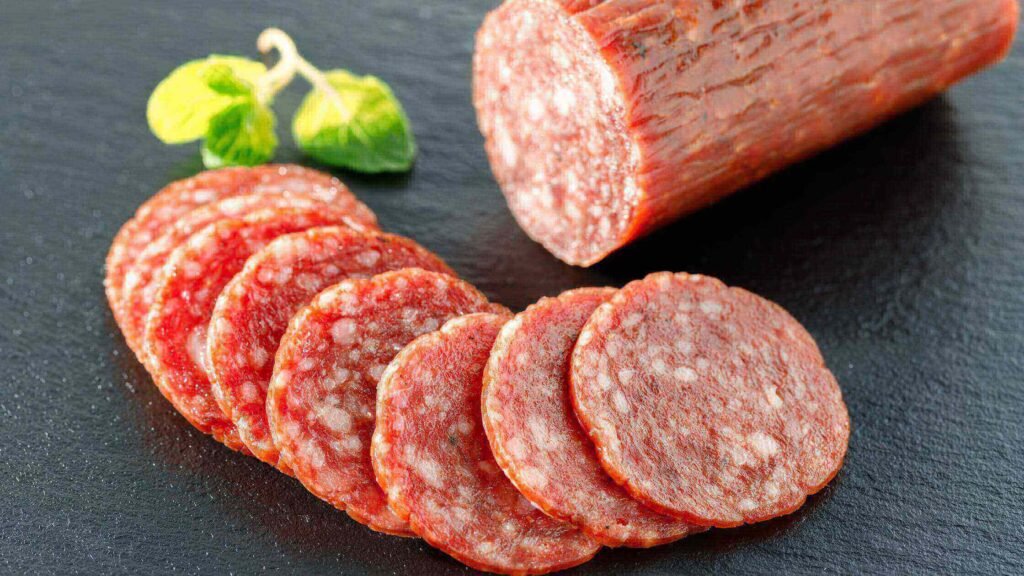
Even though meat is a good source of many vitamins and minerals, it’s important to limit your intake to a healthy level. Finding a happy medium is essential, so it’s recommended that adults consume no more than 600 grams (about a pound) of meat every week. For example, salami, with its skyrocketing salt level, is a prime example of the dangers of unrestrained meat intake.
While salt is essential for maintaining fluid balance, too much of it can have the opposite effect and raise blood pressure. Those who have a history of high blood pressure in their family should be especially careful when it comes to salami and other processed meats like this because of how high in sodium they tend to be. Adherence to these recommendations recognizes the significance of controlling meat consumption for the benefit of health and wellbeing.
59. Artificial Sweetener

Five different artificial sweeteners have been approved by the Food and Drug Administration for human use. Sucralose, aspartame, neotame, saccharin, and acesulfame all fall within this category. Sugar-free alternatives like these sweeteners are convenient, but it’s important to remember that “sugar-free” doesn’t always mean “healthy.”
Incorporating artificial sweeteners into one’s diet is recommended by the American Heart Association (AHA) and the American Diabetes Association (ADA) because of its potential to lower calorie consumption. Harvard Health’s research, however, suggests that overusing artificial sweeteners may cause people to eat more processed and less nutrient-dense foods.
Cigarette smoking may be sanctioned for those of legal age, but it doesn’t make it a healthy choice. The same can be said of sugar substitutes. Although they are legal, consuming them is not necessarily a good idea.
60. Frozen Yogurt
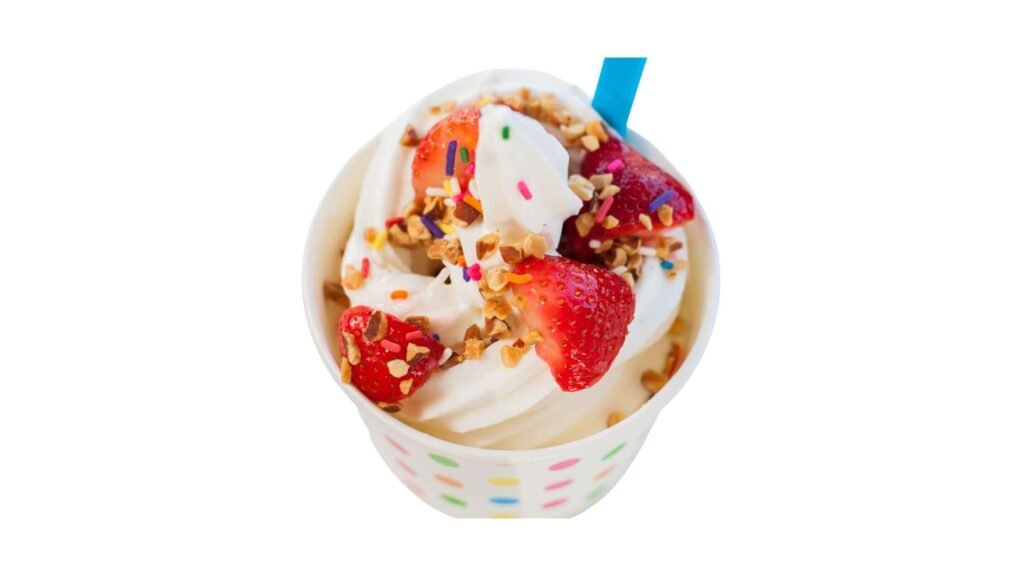
Due to its significantly lower calorie and fat content than traditional ice cream, many people choose frozen yogurt as a dessert substitute in an effort to adopt healthier dietary practices. The ubiquity of frozen yogurt bars speaks to a growing trend of people opting for this substitution.
However, it’s imperative to exercise caution against excessive consumption, for frozen yogurt doesn’t skimp on sugar. A mere half-cup of vanilla frozen yogurt registers a substantial seventeen grams of sugar, as per the USDA.
Remarkably, a typical serving of frozen yogurt can effortlessly encompass four times that sugar quantity. Paradoxically, a half-cup of vanilla ice cream averages around fourteen grams of sugar. In light of these revelations, maintaining mindfulness around portion sizes and sugar content remains pivotal, ensuring that the quest for a healthier treat doesn’t inadvertently result in sugar overload.
61. Packaged Gelatin
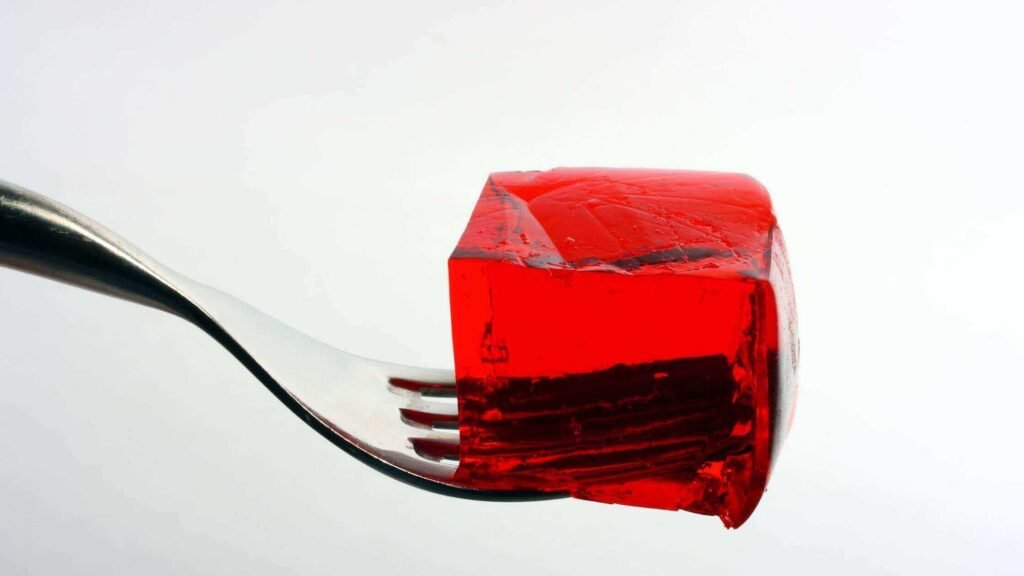
Gelatin’s many benefits stem from its high protein content. The amino acids it contains give it a wide range of health advantages, from easing aches and pains to boosting memory and focus. However, moderation is the better part of valor, and WebMD suggests no more than 10 grams of gelatin per day.
If you go above this limit, you can experience some unpleasant digestive symptoms, including bloating, gas, heartburn, and a heavy feeling in your stomach, and you might even have an allergic reaction.
It’s worth noting that manufactured gelatin goods, such as candy corn, Jell-O pudding, and Sour Patch Kids, typically contain a lot of sugar, making them less healthy than natural gelatin. Exploring supplement possibilities emerges as a feasible avenue for people inclined towards a health-conscious attitude towards gelatin use.
62. Microwavable Rice

Brown rice in particular has several health benefits because of the magnesium, selenium, and B vitamins it contains. However, it’s wise to measure the odds well. Despite its health benefits, brown rice contains significantly more arsenic than white rice (up to 50% more). White rice, on the other hand, has been under review since it lacks the fiber and micronutrients found in brown rice.
Science of the Total Environment conducted a study on rice and arsenic levels that highlights the potential dangers. Consuming rice on a regular basis can lead to chronic arsenic exposure and its associated health problems, including an increased risk of death.
While it would be exaggerated to say that eating too much microwaveable rice is dangerous, it would be wise to avoid doing so on a regular basis. A healthy diet that includes a variety of rice helps prevent adverse health effects.
63. Canned Fruit

The convenience of canned fruit may tempt you while deciding between it and fresh fruit. Unlike fresh fruits, which quickly spoil, canned fruit can be stored for a long period without going bad.
The hitch is that many canned fruits have added sugar. Canning raises the fruit’s sugar content by adding syrup during the procedure. Canned pears in syrup, for instance, can include as much as 19 grams of sugar in a single serving.
On the other hand, there are twelve grams of sugar in pears that have been canned in their own juices. Canned fruit is a convenient food, but it’s important to check the sugar content if you want a healthy option.
64. Turkey Bacon
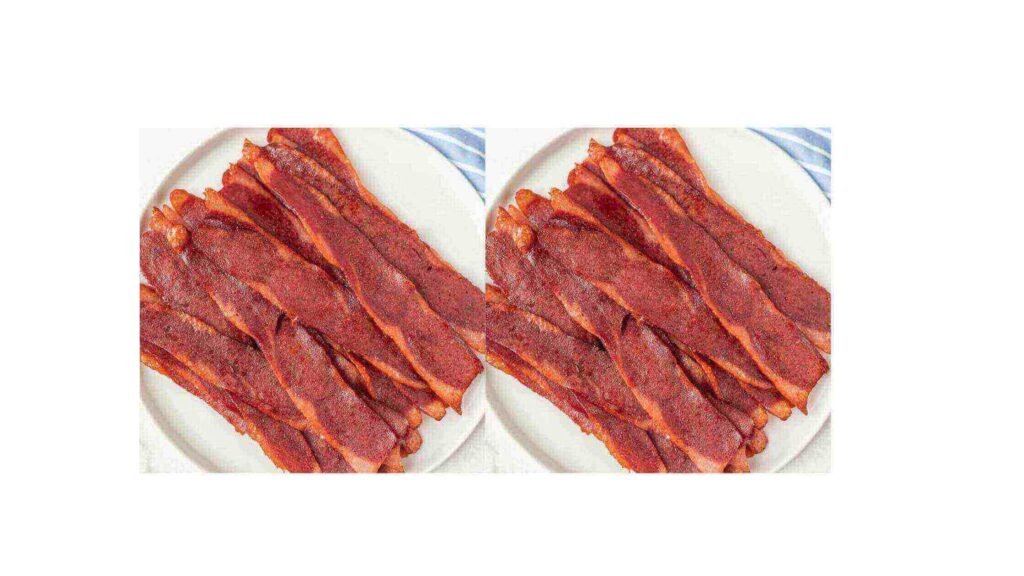
Because it contains less fat and calories, turkey bacon is sometimes substituted with pork bacon. This makes it a great choice for vegetarians, vegans, and anyone on restricted diets. But to advertise turkey bacon as a “health food” would be dishonest.
Despite these benefits, turkey bacon is still a processed meat and hence contains the usual additives and chemicals found in foods like this. It’s also worth noting that turkey bacon, in comparison to hog bacon, typically has more added sugar and less protein.
Saturated fat, which has been linked to cardiovascular diseases including heart disease, is still present at 4 grams, so moderation and a balanced diet are still necessary.
65. Impossible Burger
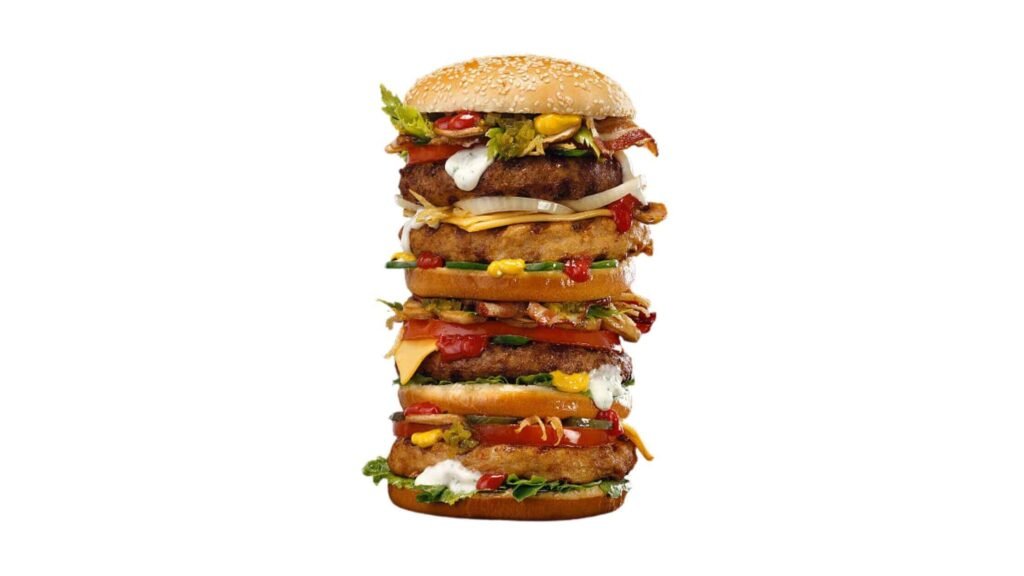
The Impossible Burger has gotten a lot of attention because it tastes like meat but is made of only plants. Even people who like meat have tried it because of this new idea, which makes it different from other veggie burgers.
Even though the Impossible Burger has vitamins, minerals, and protein that are good for you, it’s important to know that it also has a lot of saturated fat—about eight grams, which is about the same as a normal meat patty.
Also, the burger has been highly processed and has 370 milligrams more sodium than a normal beef or turkey patty. Even though there are some good things about the Impossible Burger, it is not a perfect replacement for red meat, and its nutritional value should be taken into account.
66.Sodas/Soft Drinks
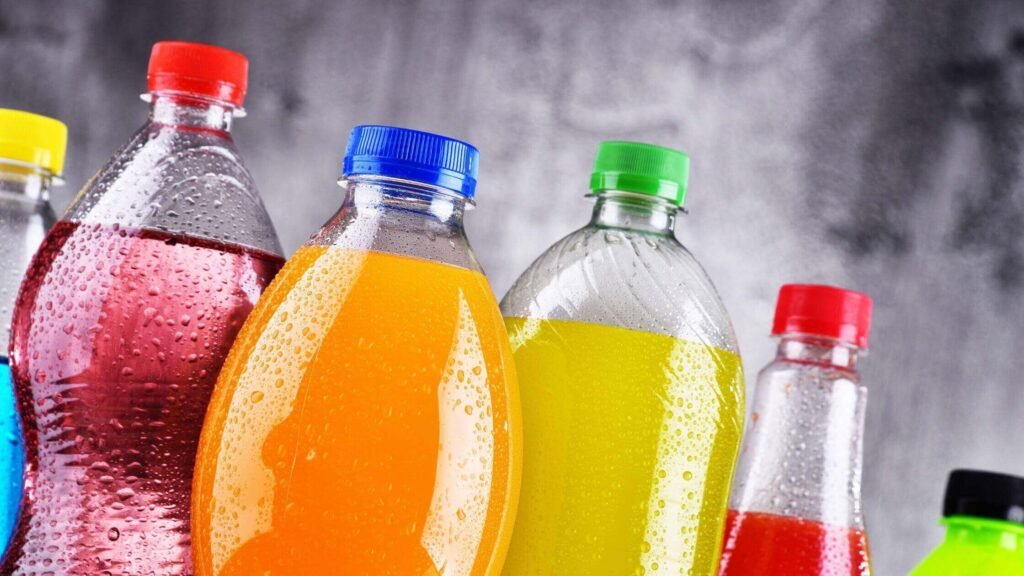
Recent headlines suggest a possible link between diet sodas and an increased risk of stroke, with both diet and regular sodas previously associated with health concerns like obesity, kidney damage, and certain cancers.
However, most studies relied on people’s memories of their soda consumption, and while these findings raise concerns, they can’t definitively prove a health risk. As a soda drinker, it’s essential to approach these headlines critically and consider moderating your soda intake while waiting for more conclusive research.
67. Raw salmon

Consider avoiding raw salmon due to potential health risks. CBC Canada reported a case where a consumer found numerous parasitic nematodes in their sockeye salmon fillet, which could cause gastroenteritis or infection if consumed raw in dishes like sushi or poke. Cooking or freezing at extremely low temperatures effectively eliminates these parasites.
Additionally, exercise caution with farmed salmon. Healthline cautions that farmed salmon may have been exposed to potentially carcinogenic chemicals, though the situation has improved in recent years.
68. Marshmallows

Marshmallows can be quite mysterious in terms of their composition. According to the Food Network, they are primarily made up of sugar, corn syrup, and gelatin. These fluffy treats are essentially non-nutritive and provide minimal nutritional value, as pointed out by VeryWell Fit. While consuming them in moderation shouldn’t lead to significant harm, it’s essential to be mindful, as the calorie content in even a few marshmallows can accumulate rapidly.
Conclusion
In the complicated world of nutrition, it’s easy to fall for the allure of popular foods, but the key to making smart choices is to know how they might affect your health. As we wrap up our look at these bad foods, remember that understanding is the key to change.
By knowing the risks of these unhealthy foods and being aware of how they affect our health, we can make better decisions about what to eat. It’s not about giving up the tastes we love. Instead, it’s about finding healthier choices and finding a balance that lets us enjoy the culinary pleasures of life without putting our health at risk.
So, be aware the next time you grab that tasty snack or order your favorite food. With the information we’ve found, you can enjoy your meals without feeling guilty, knowing that you’re making decisions that are good for your health and well-being. Here’s to a future of healthy, delicious eating, where you have control over your health and everyday foods help you live a healthier, happier life.


